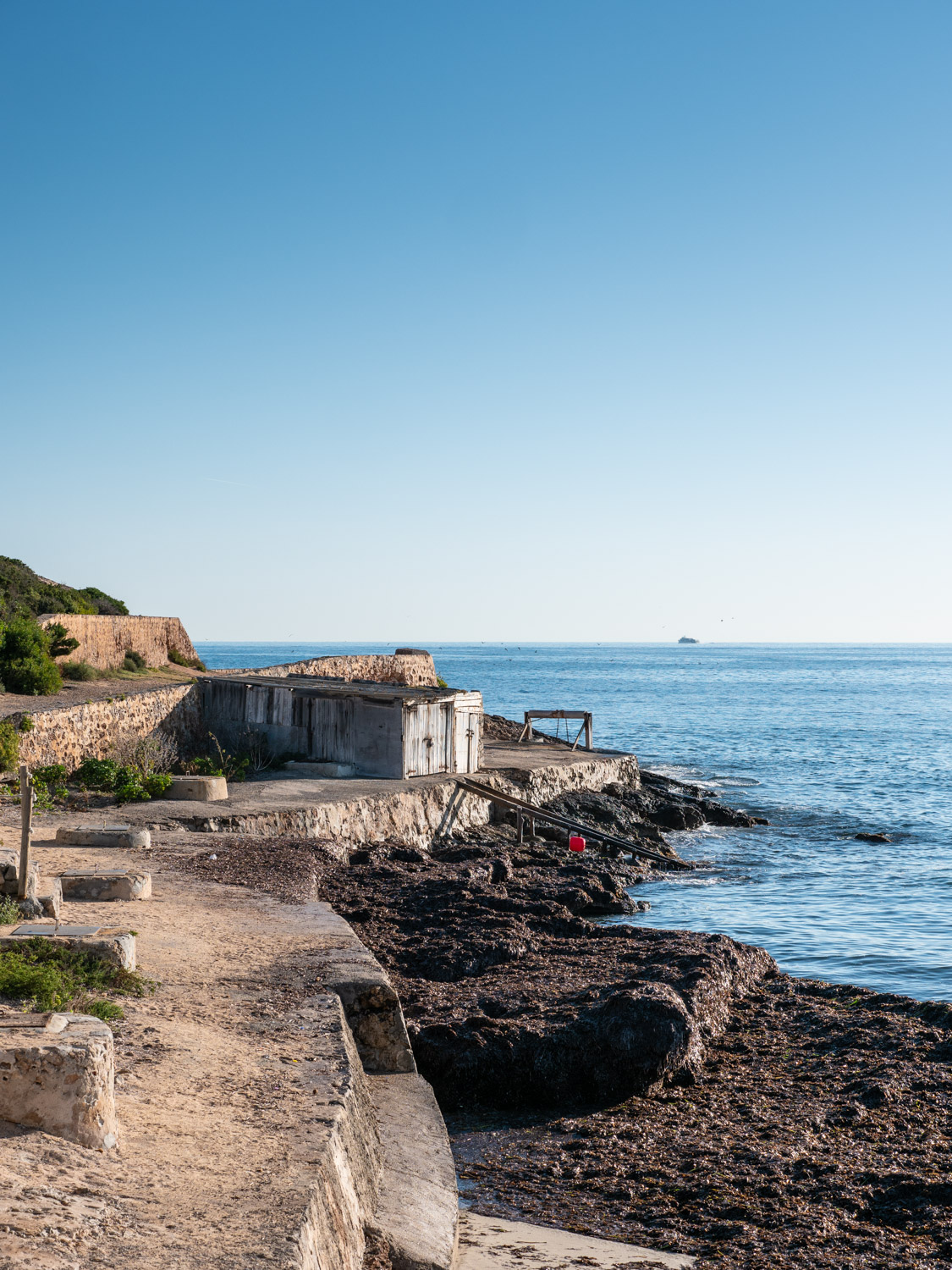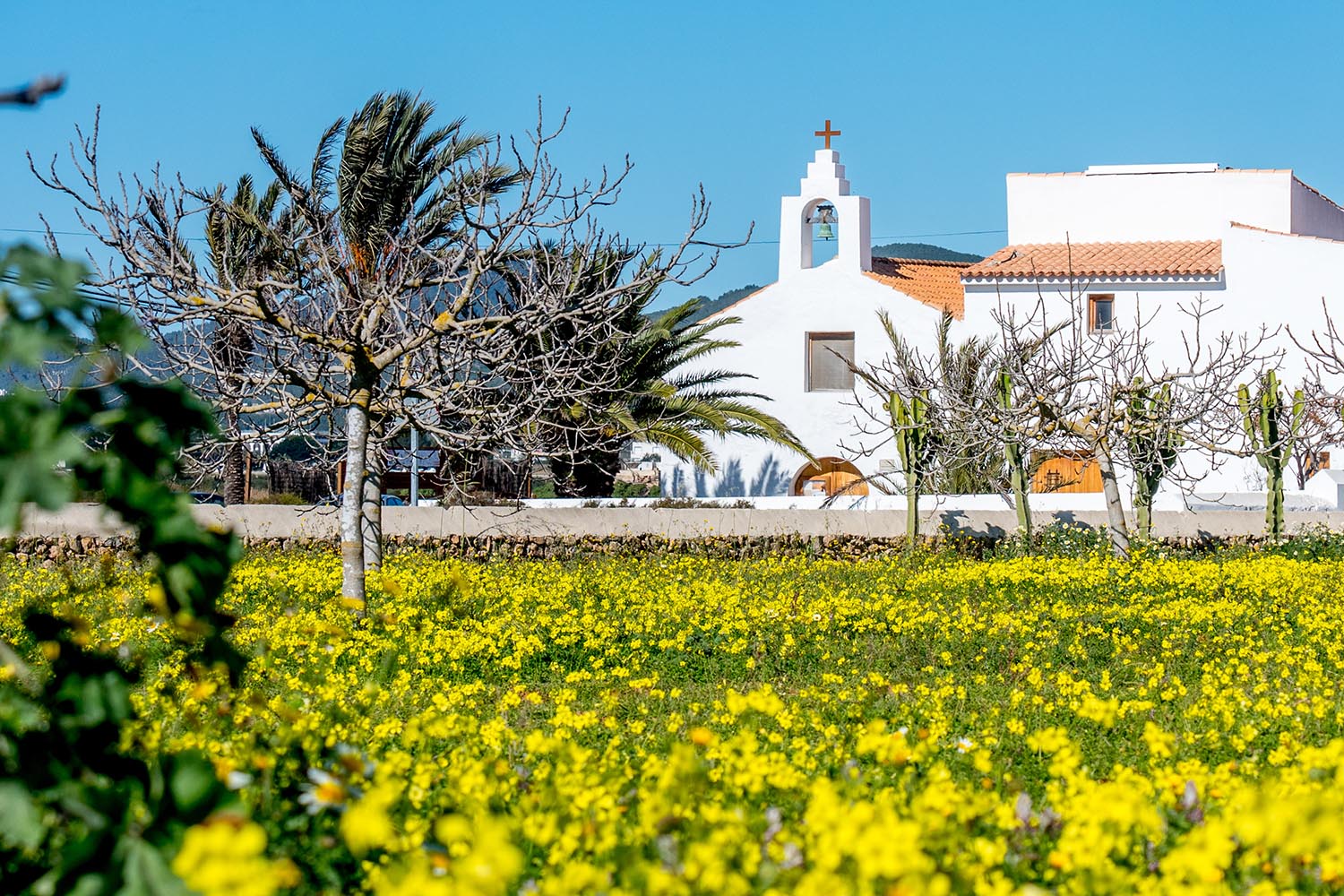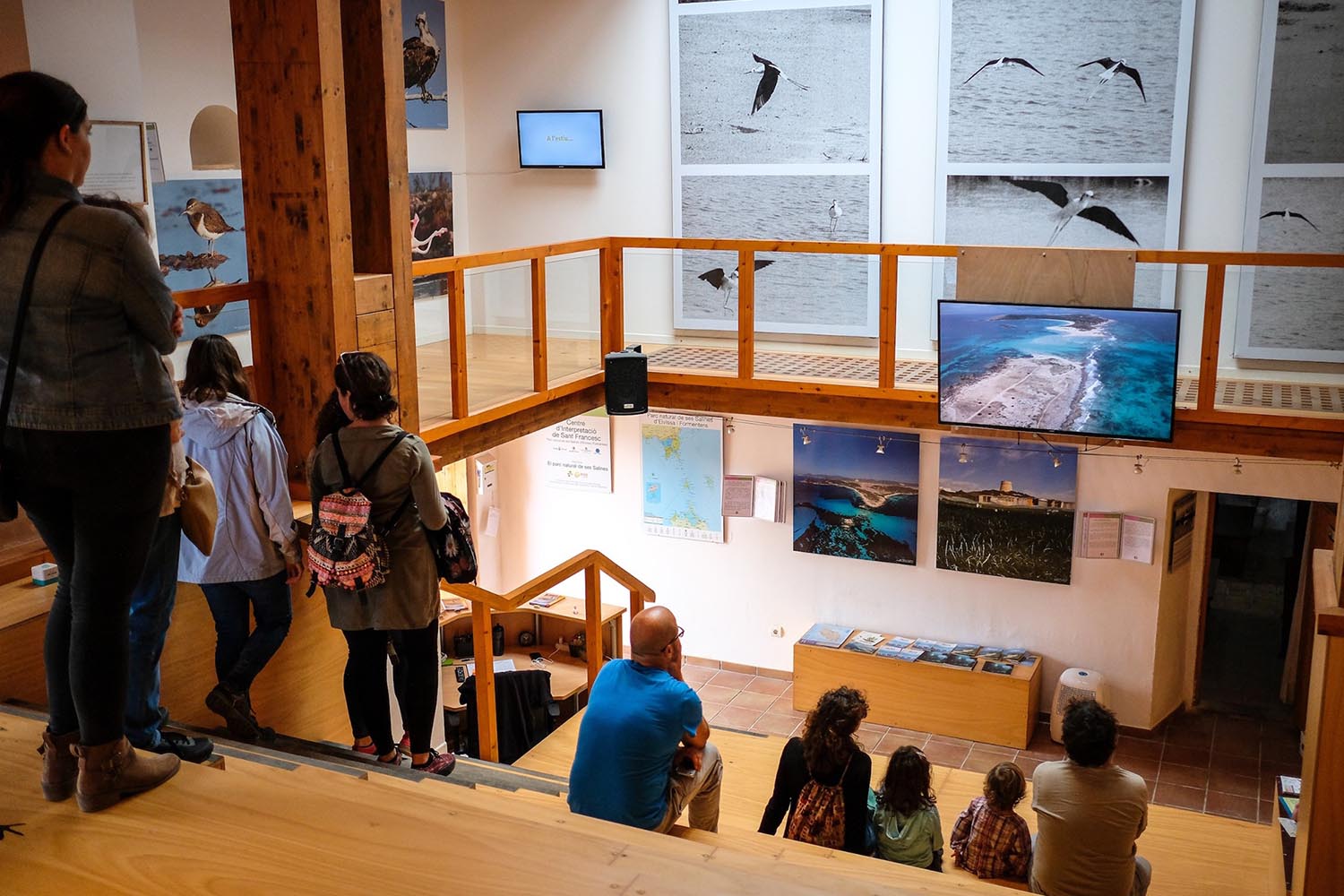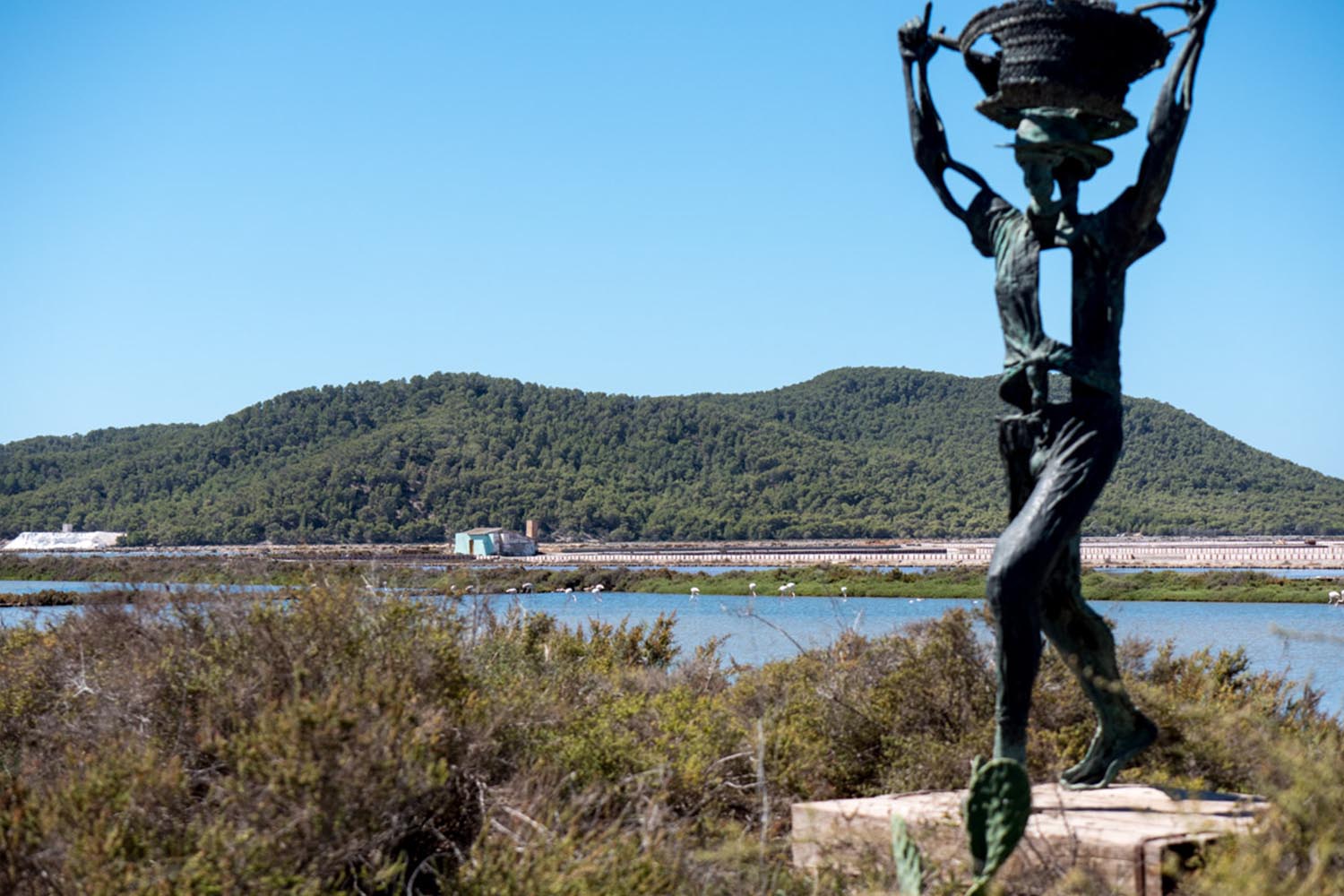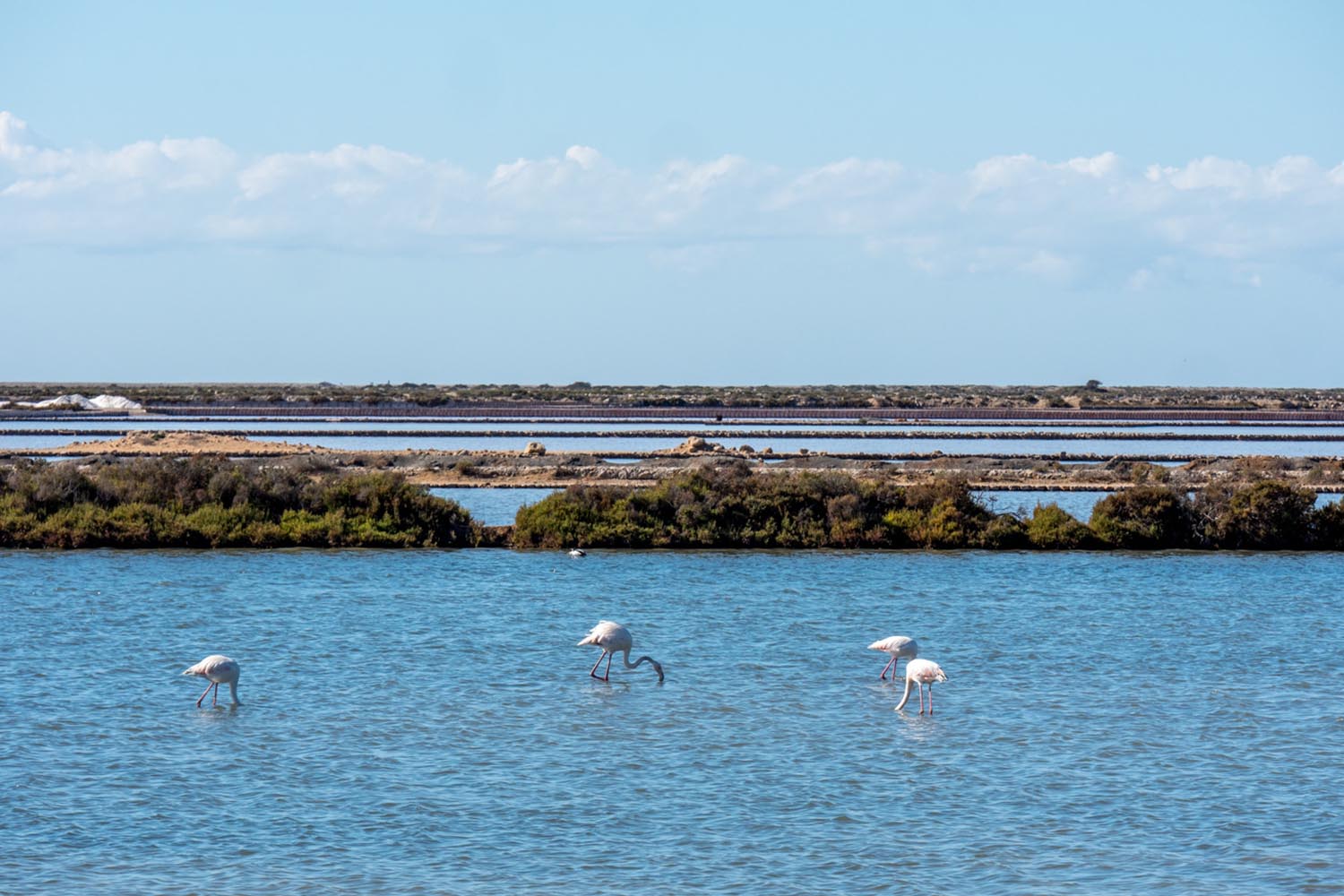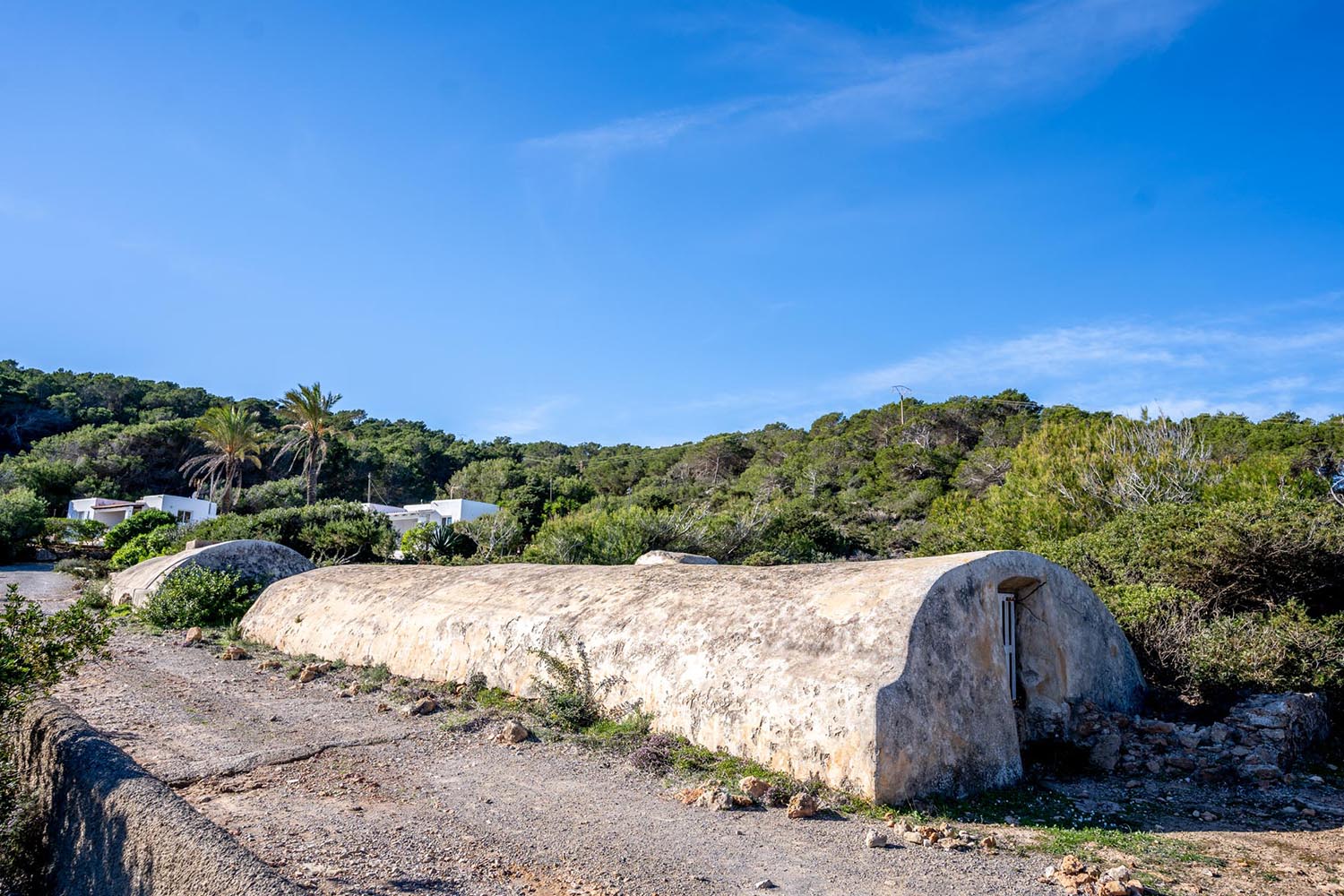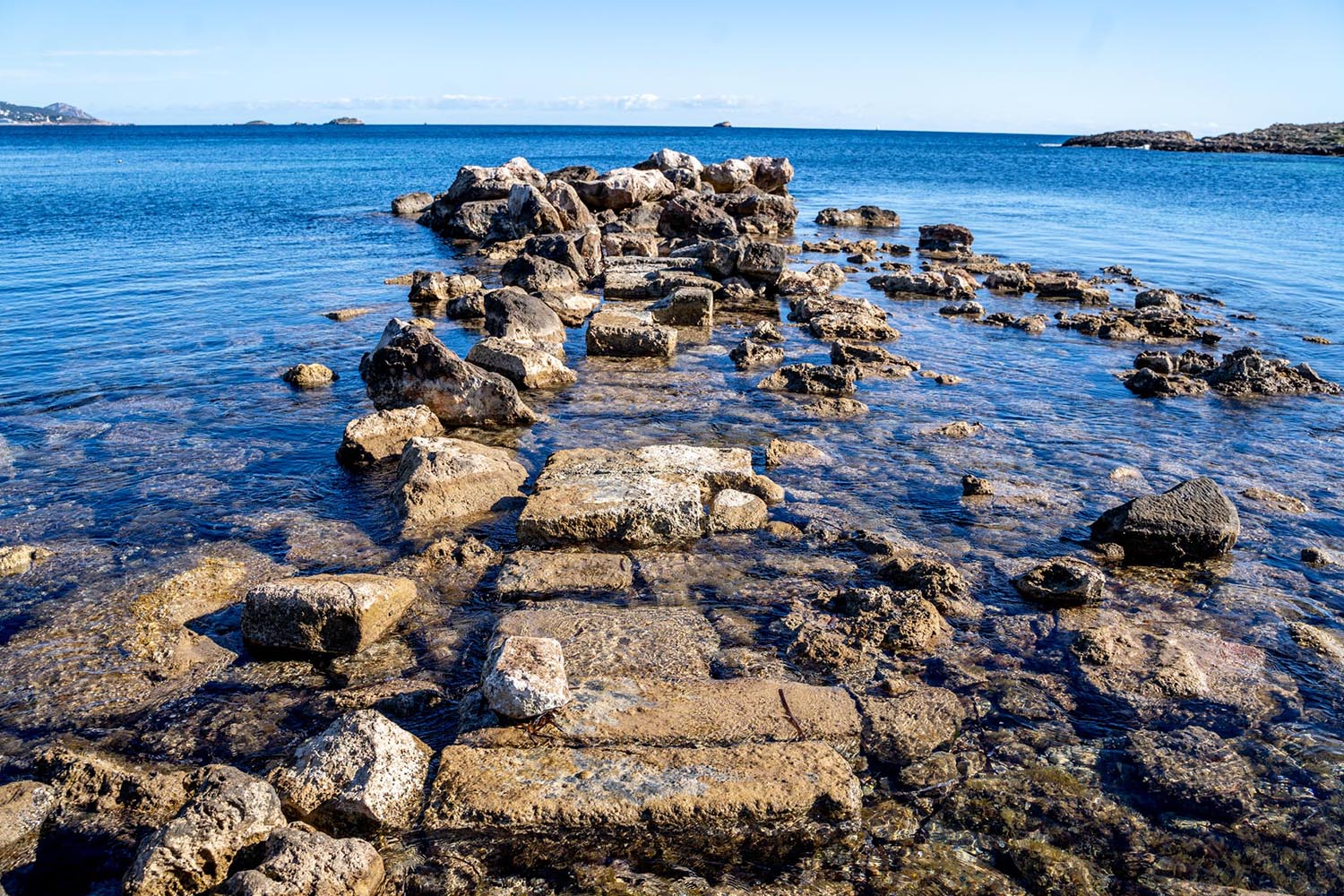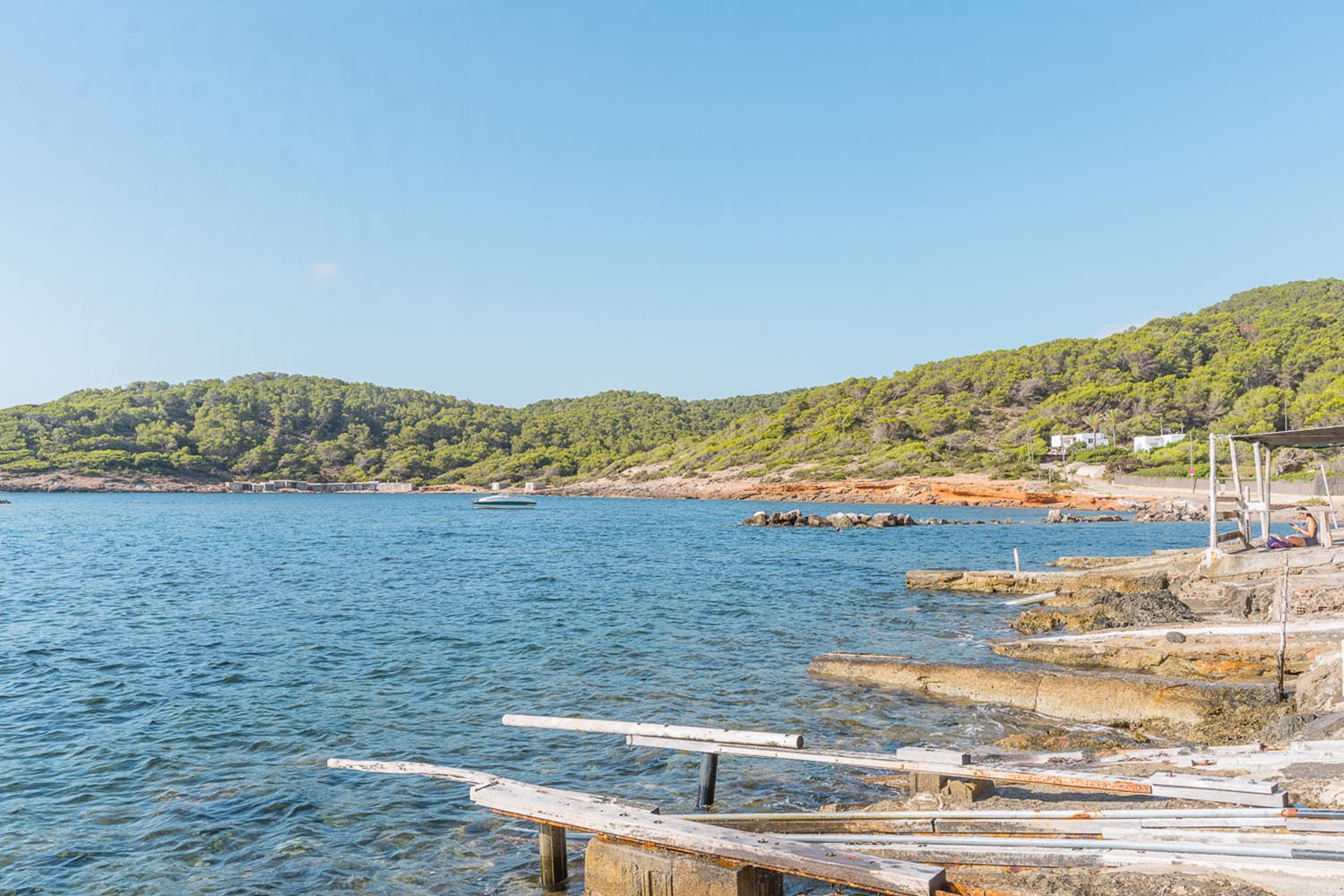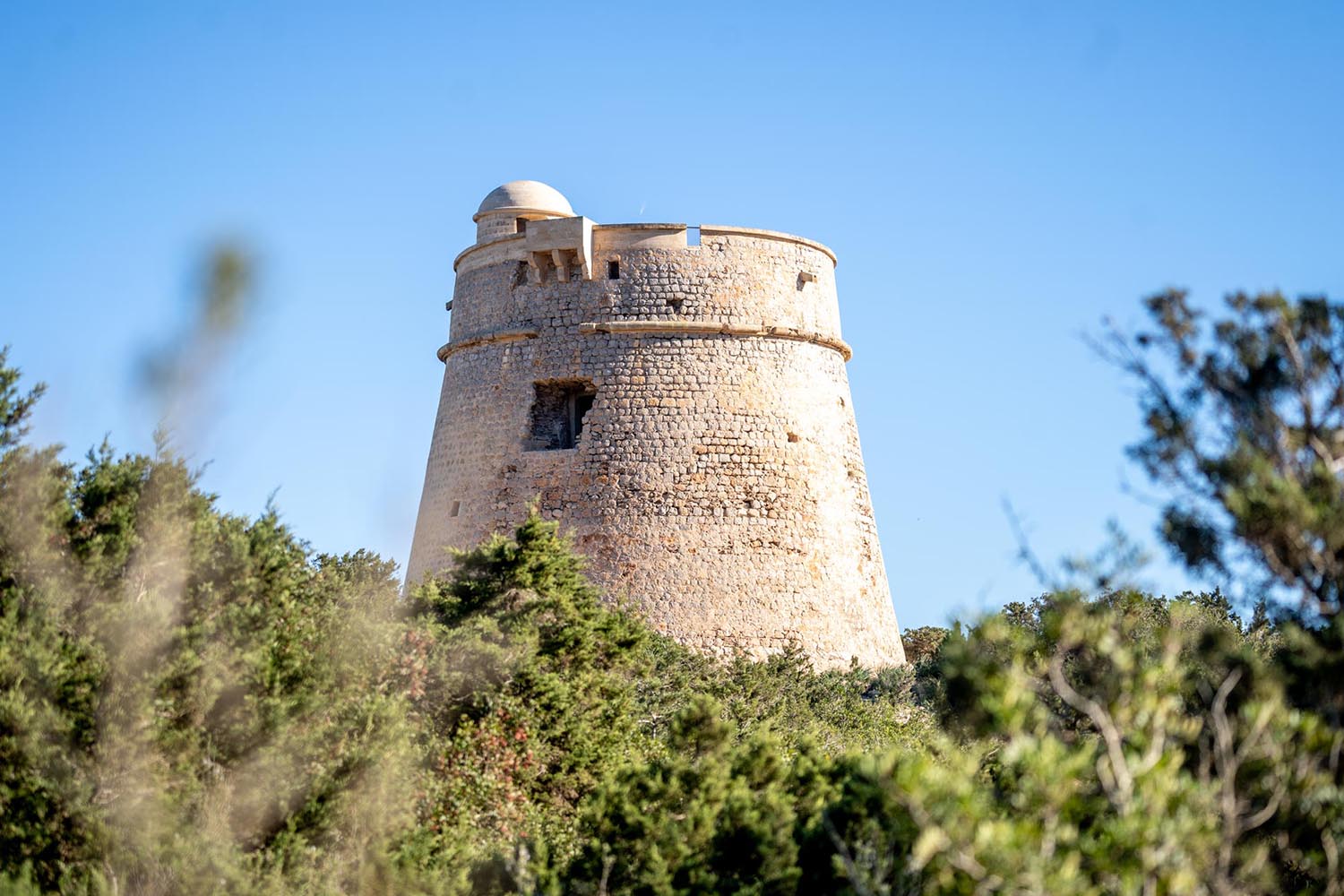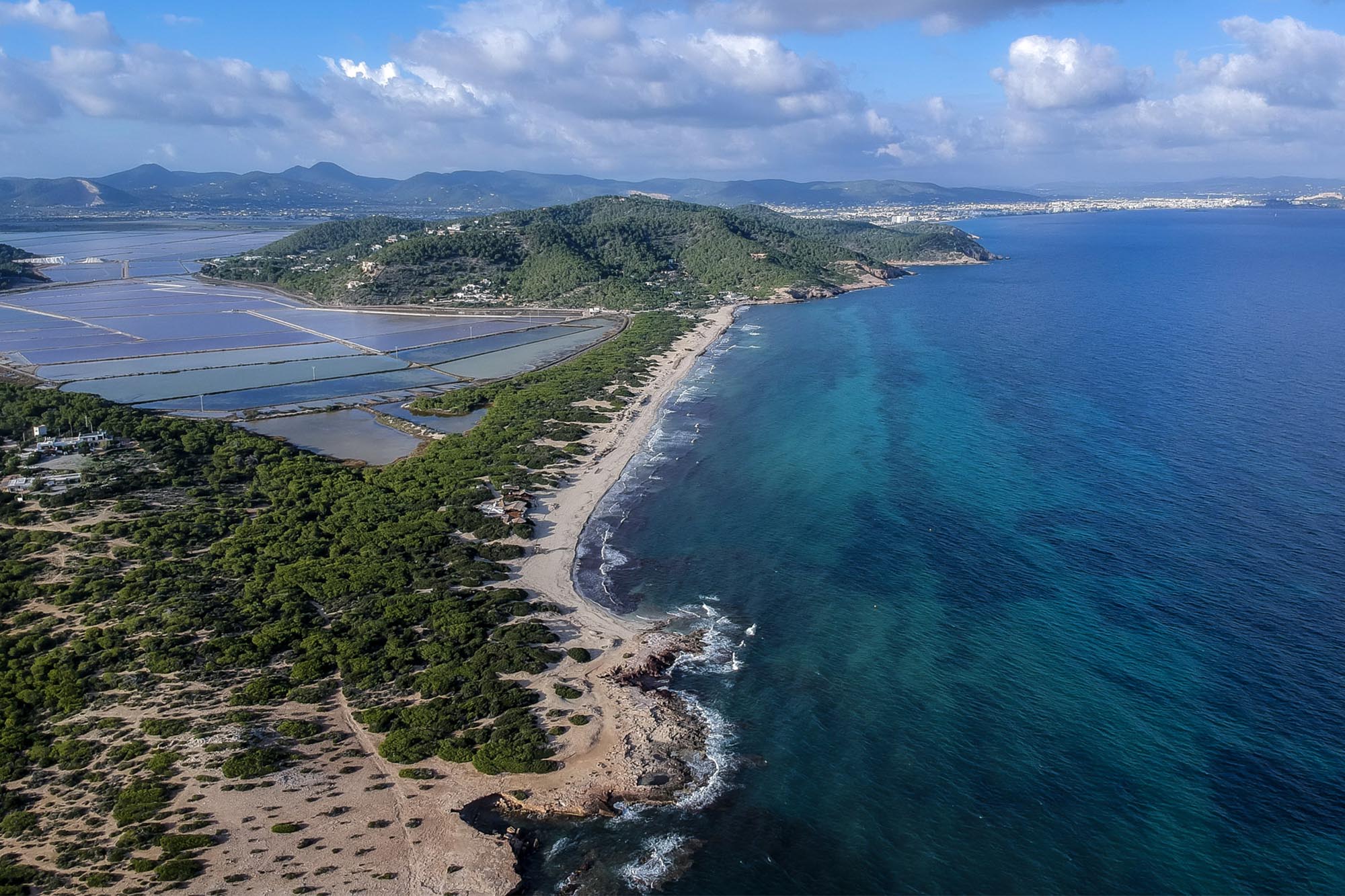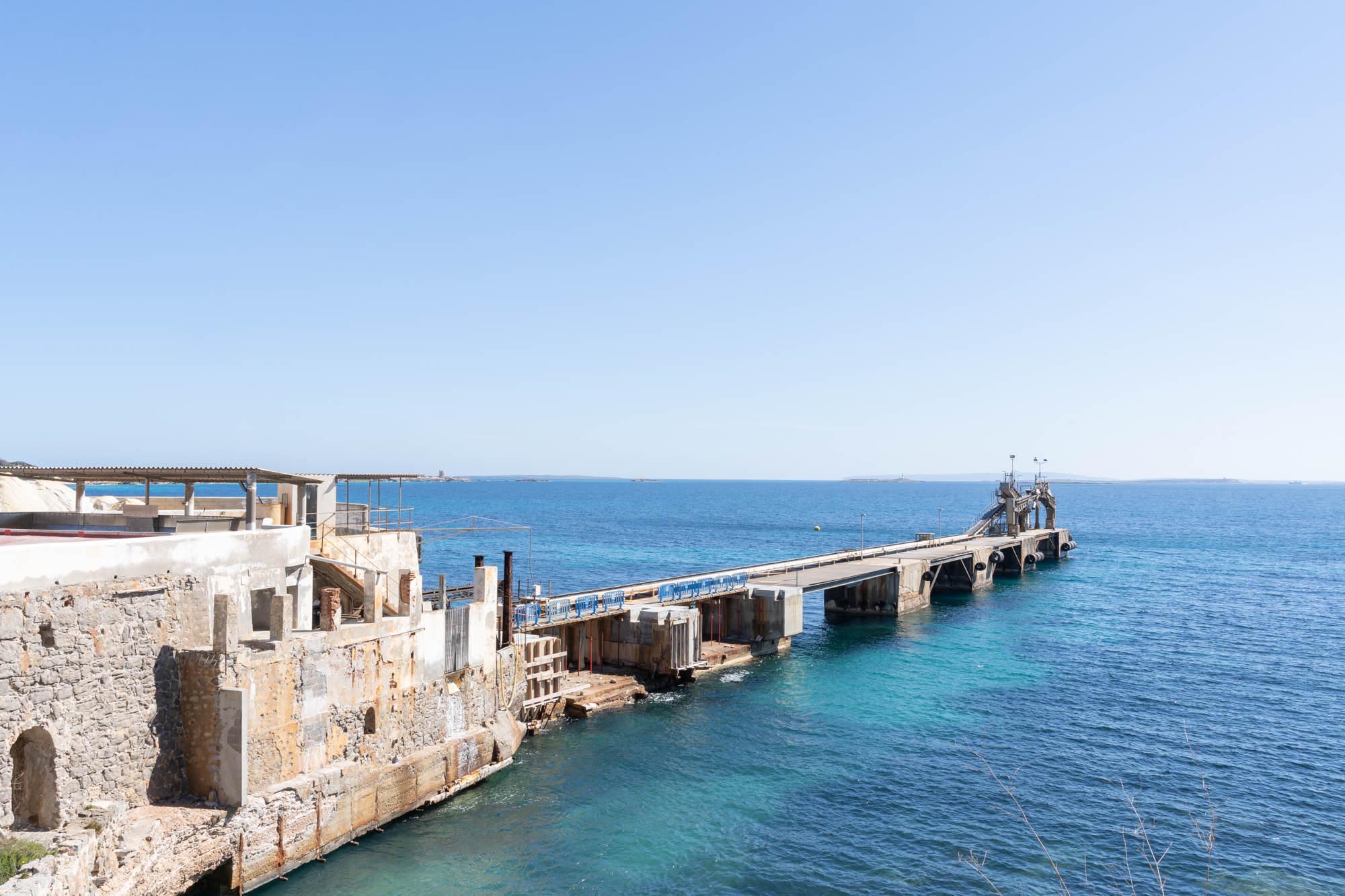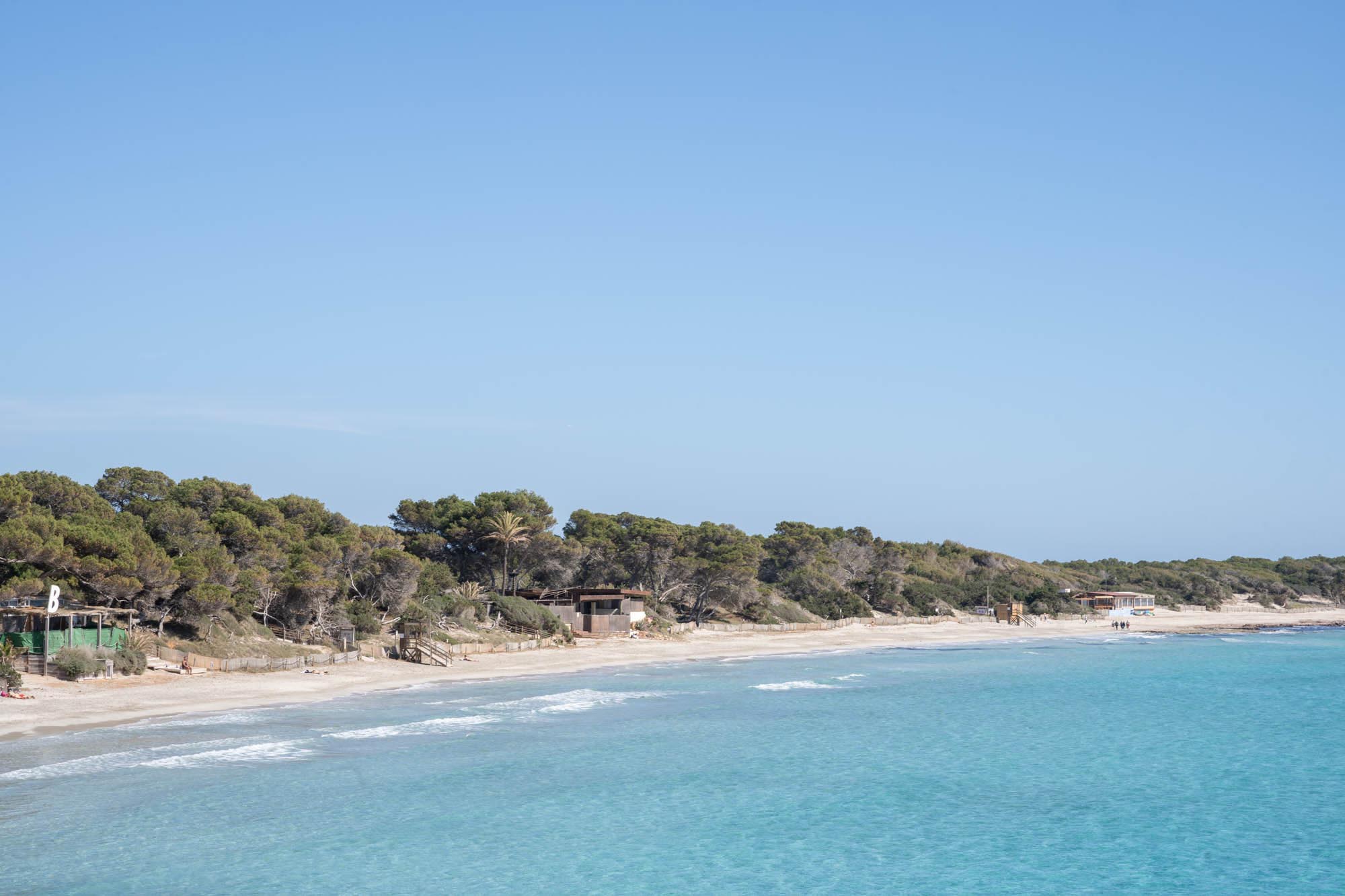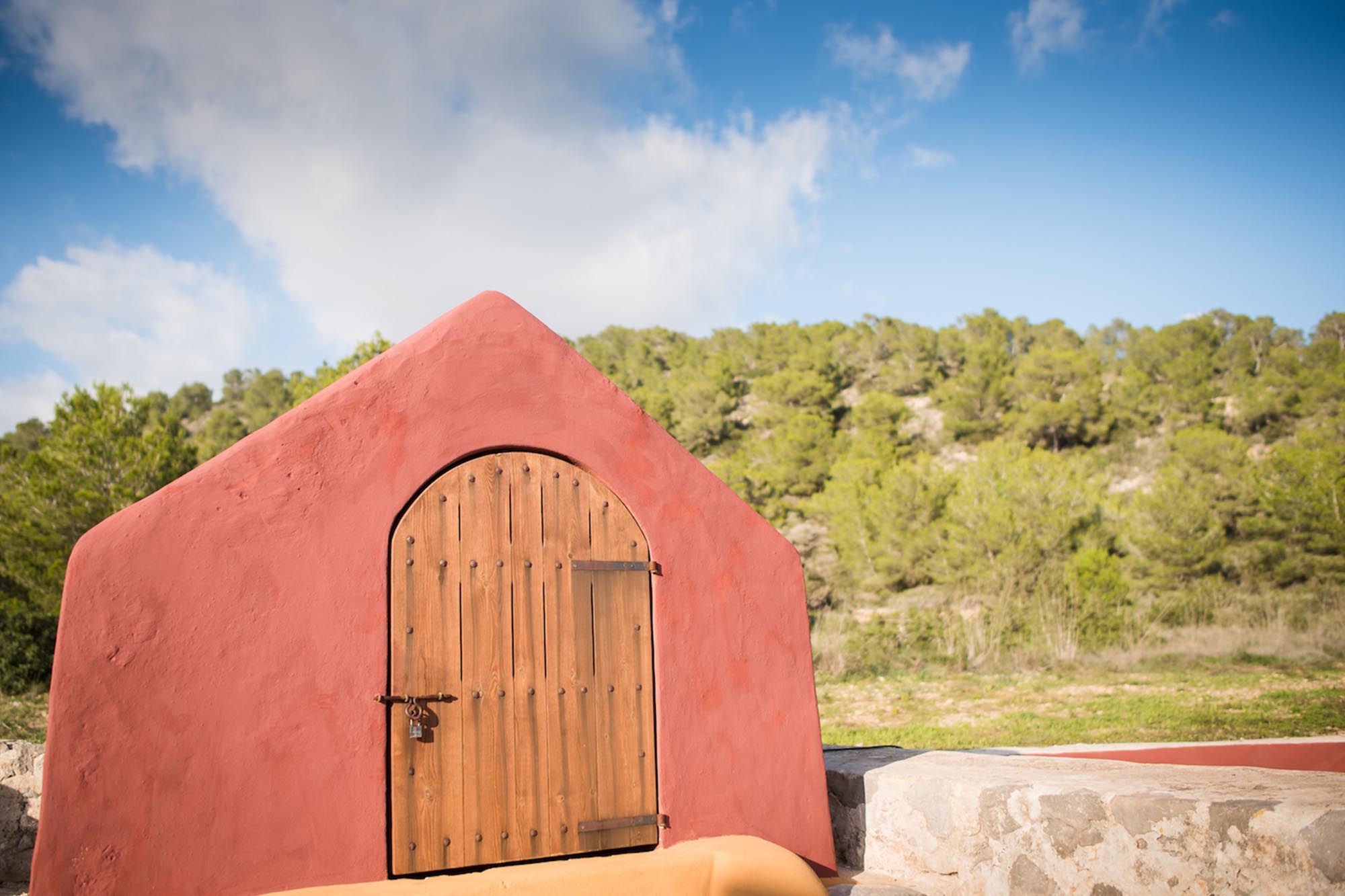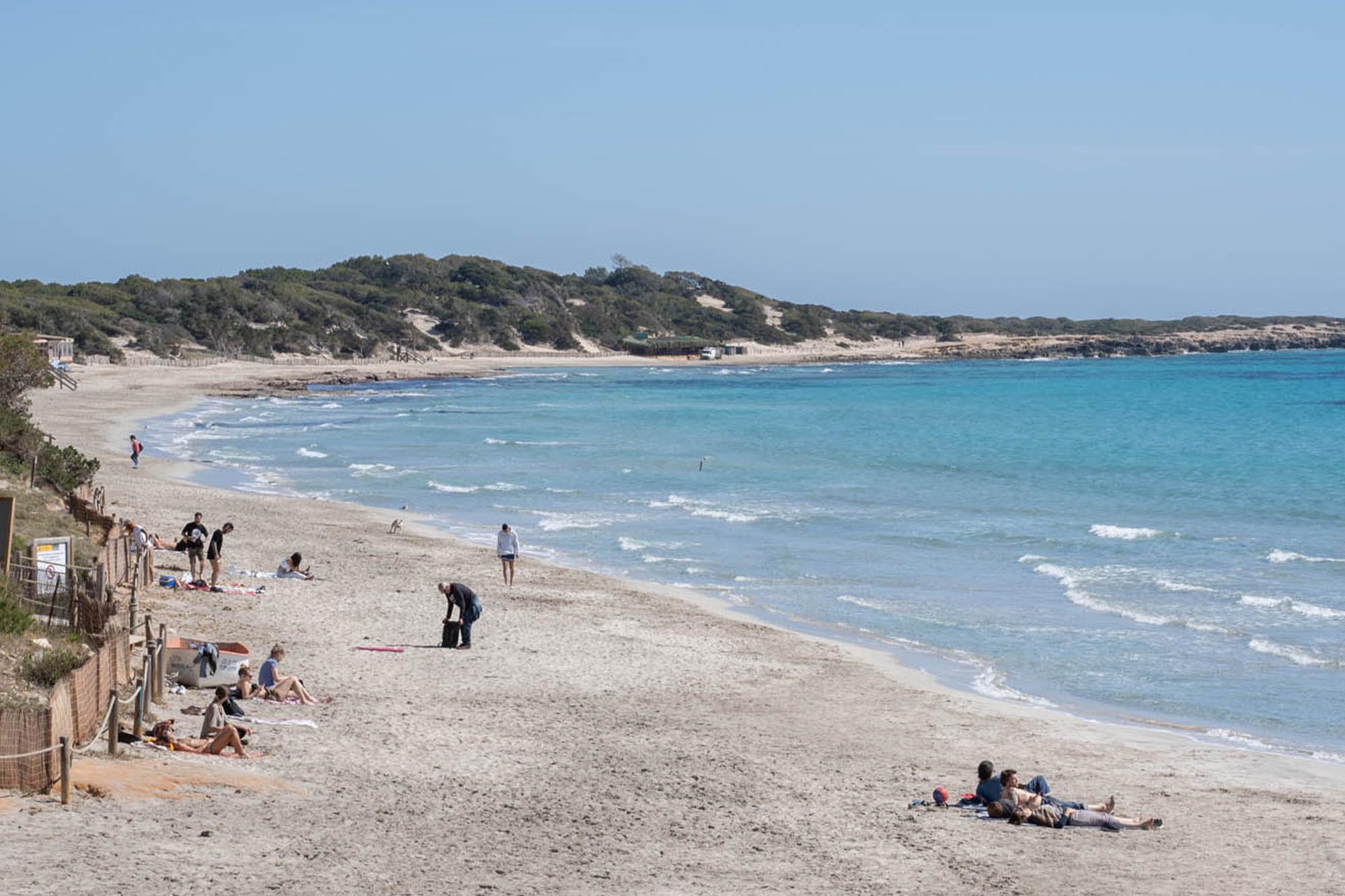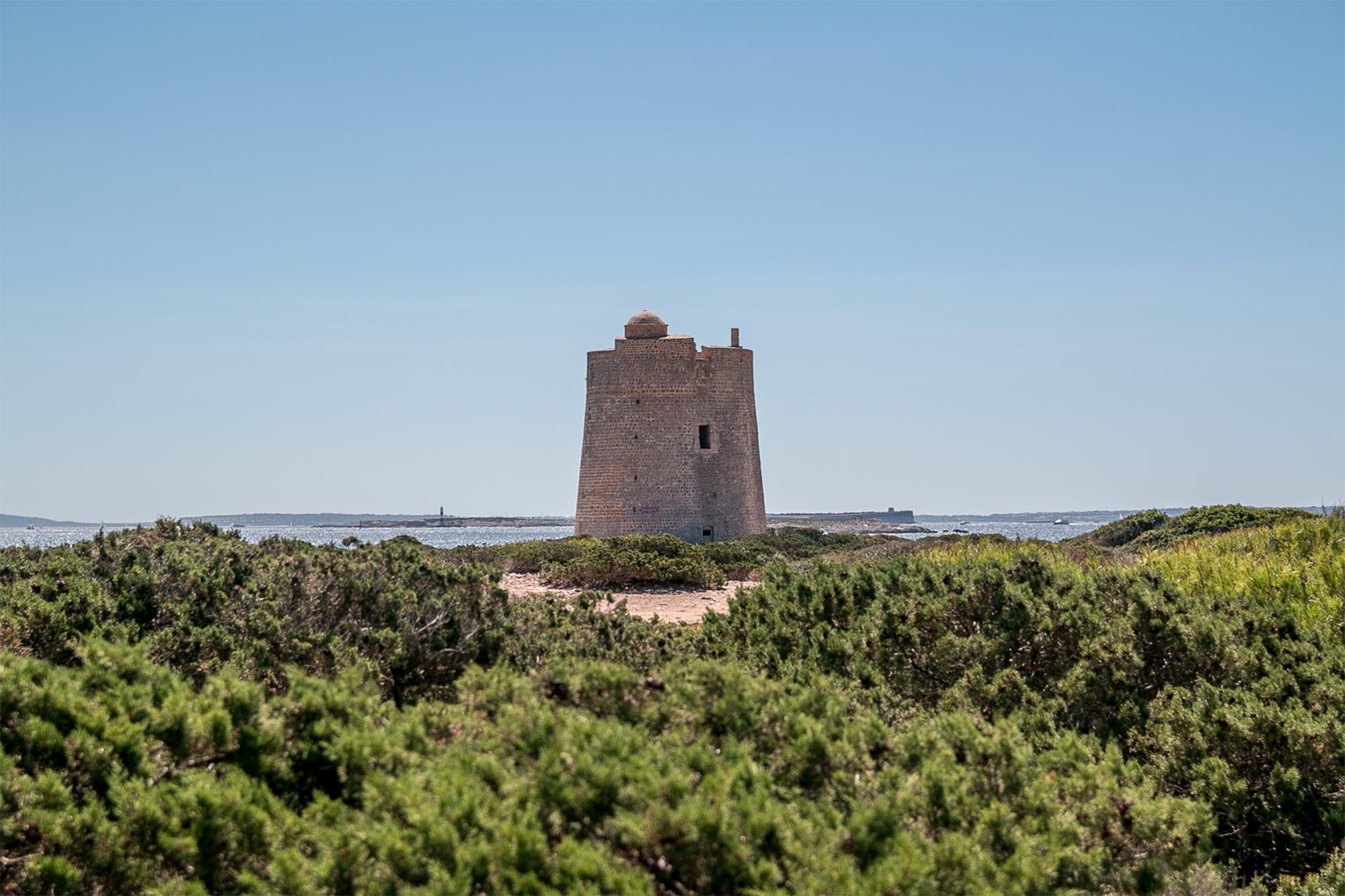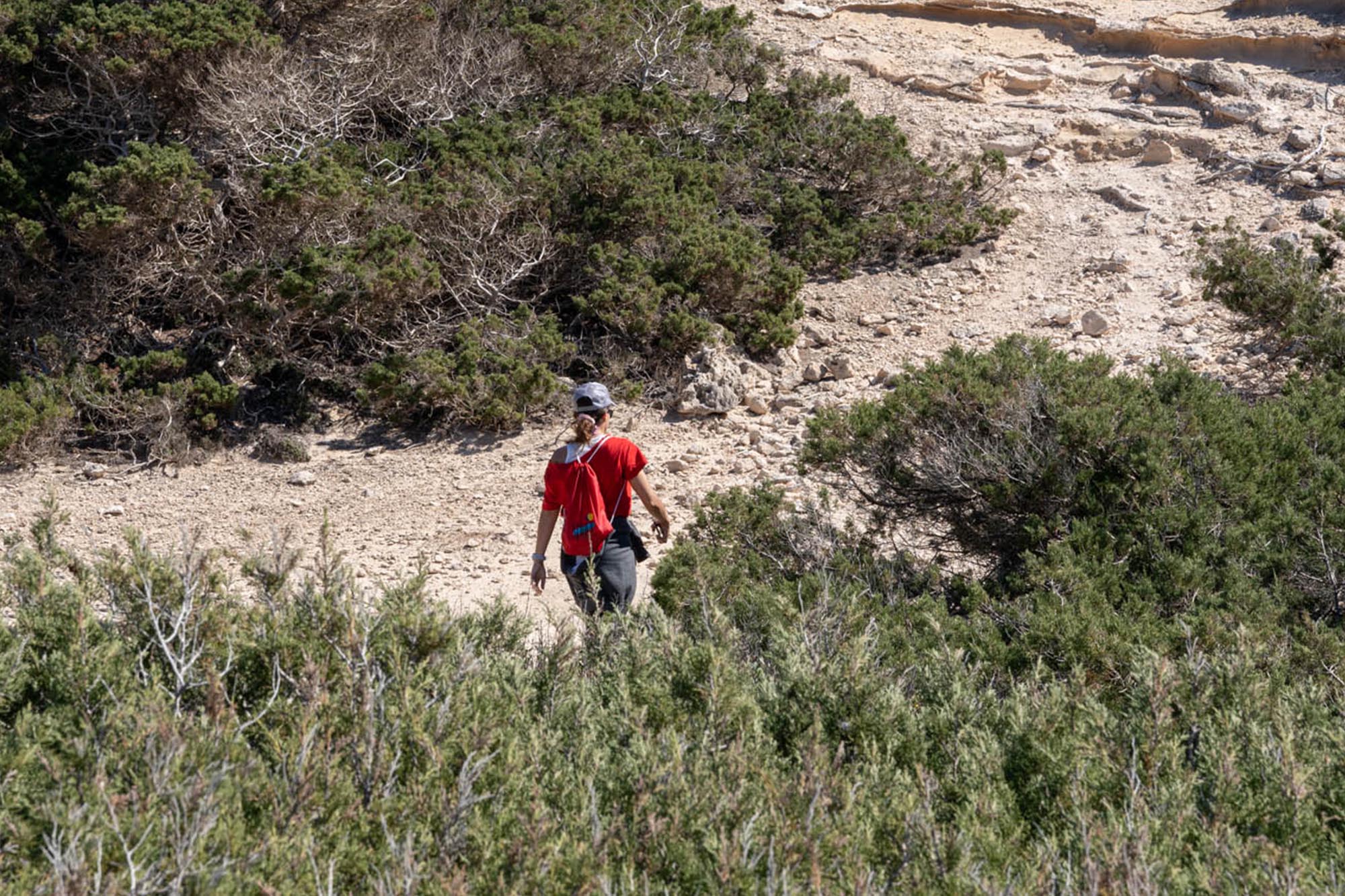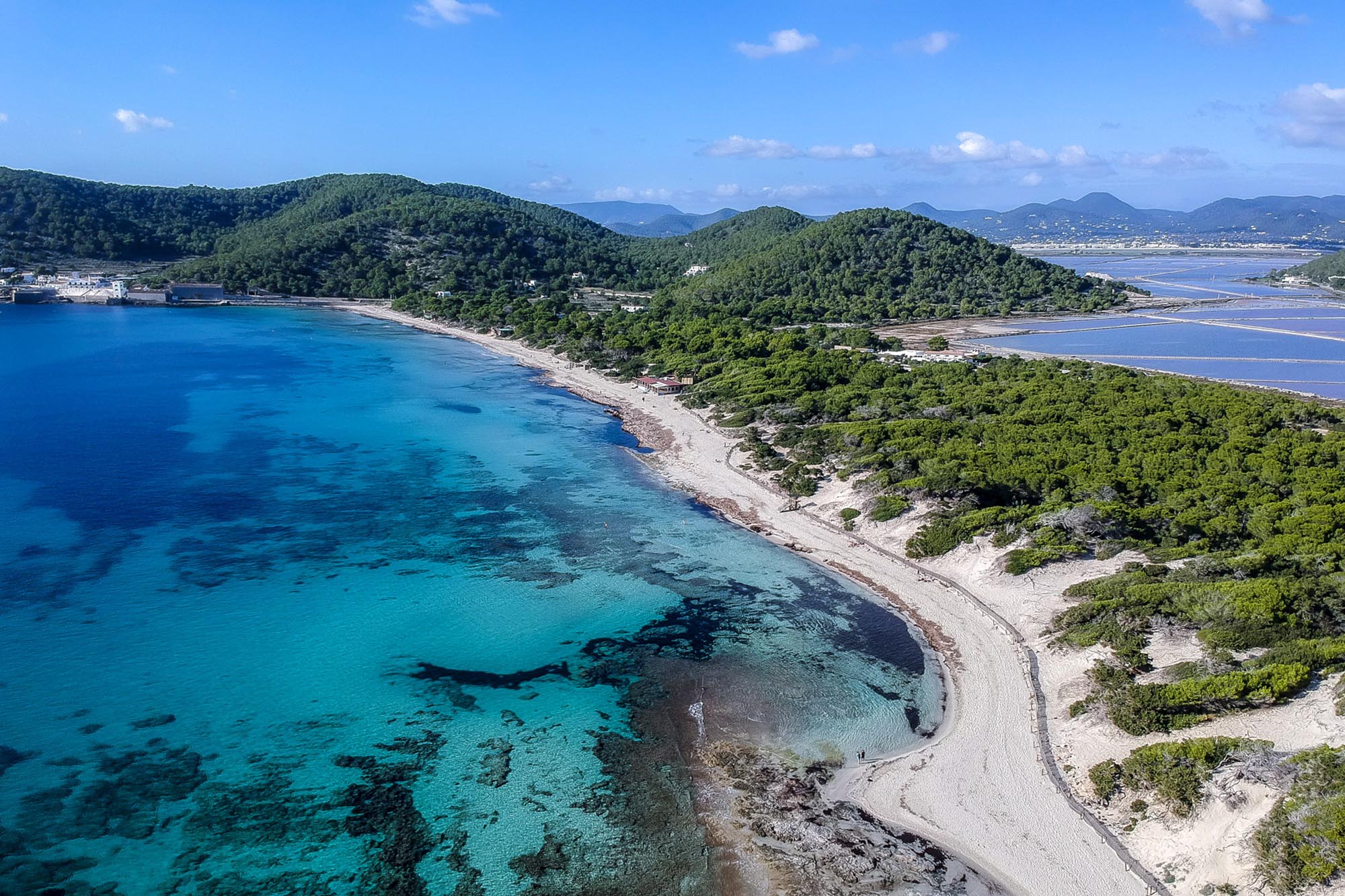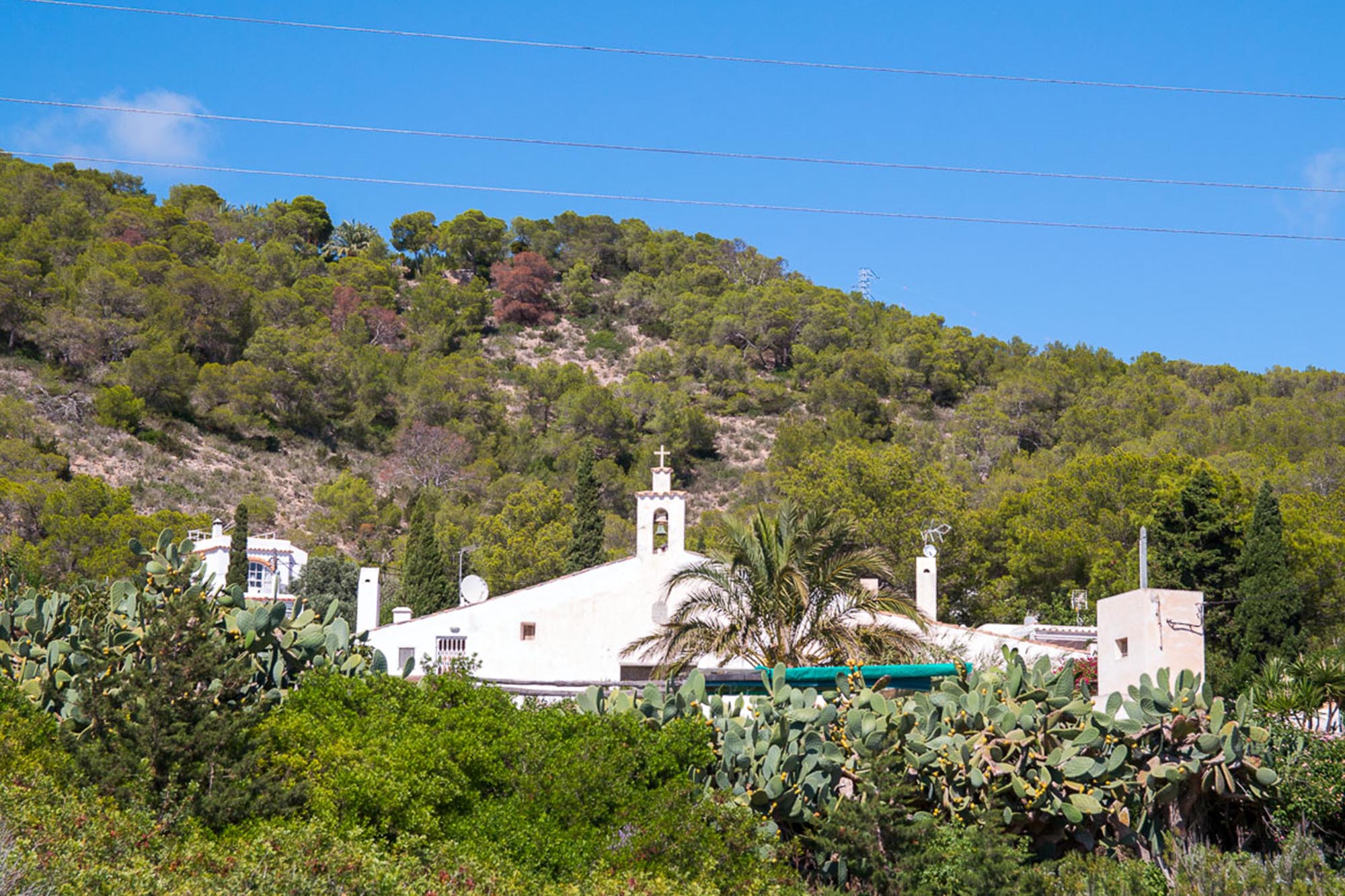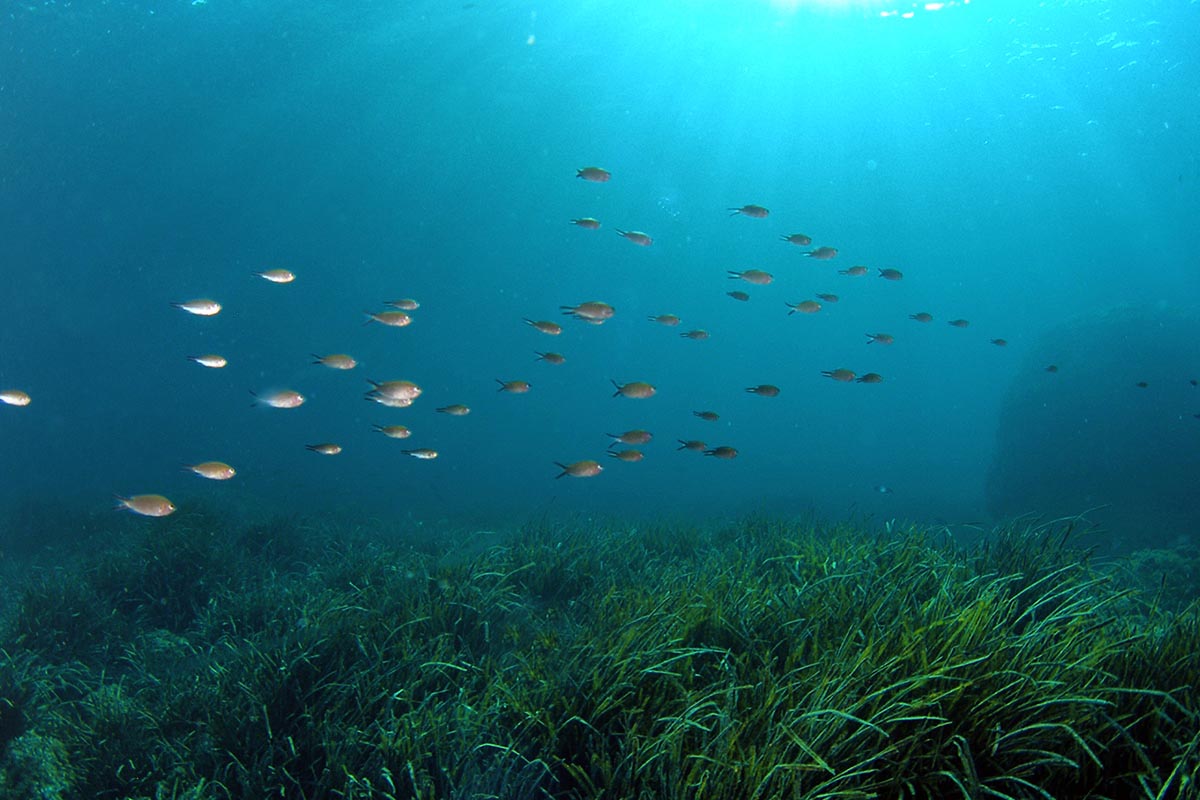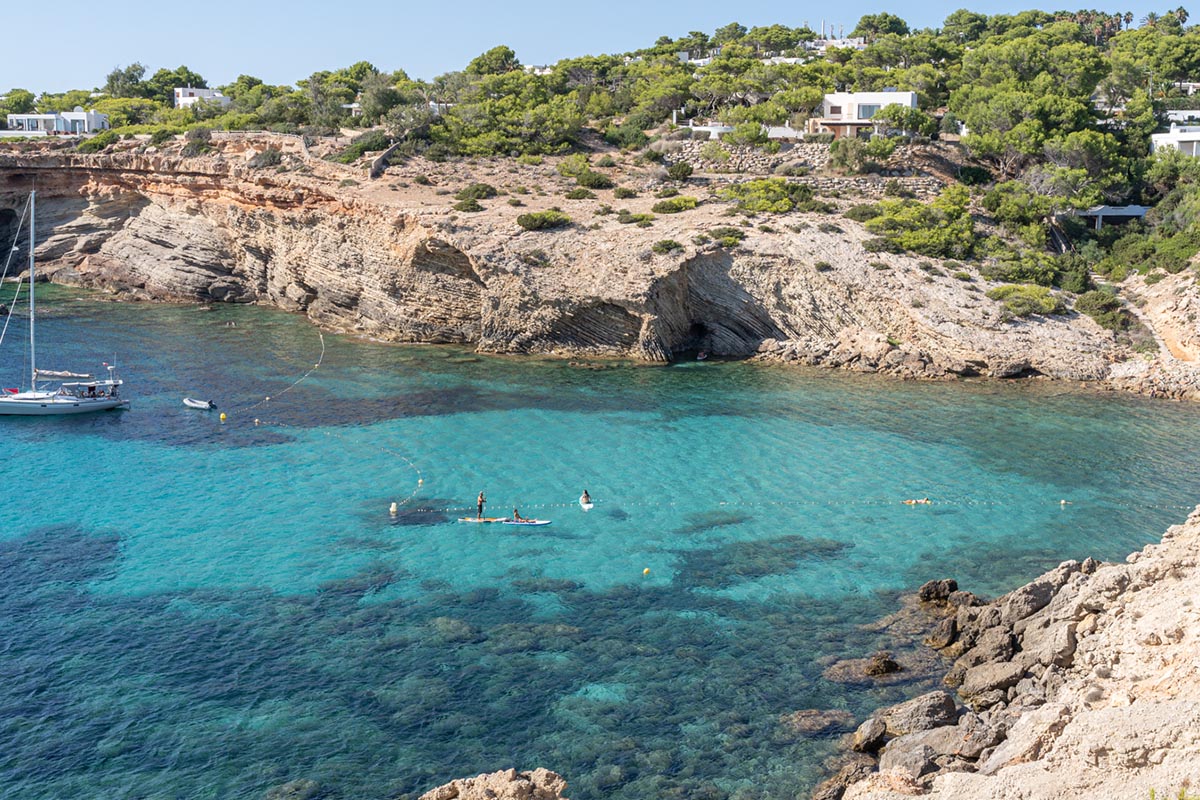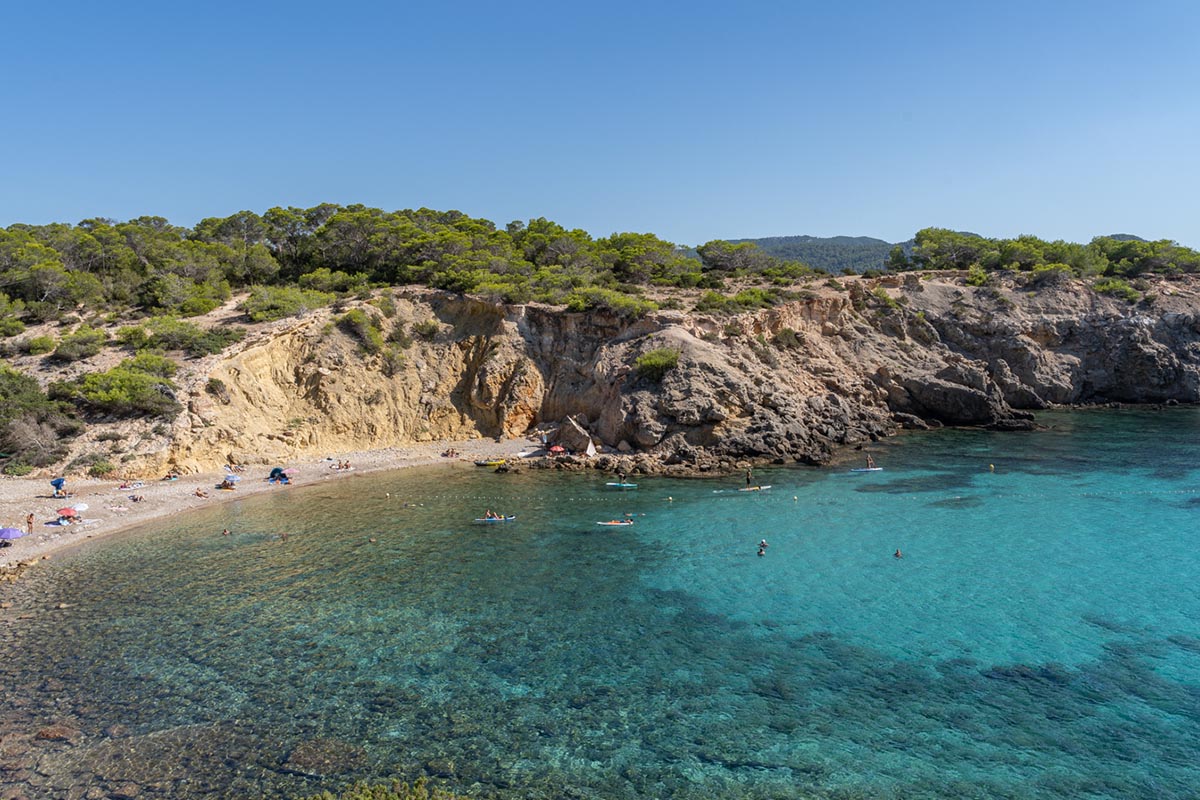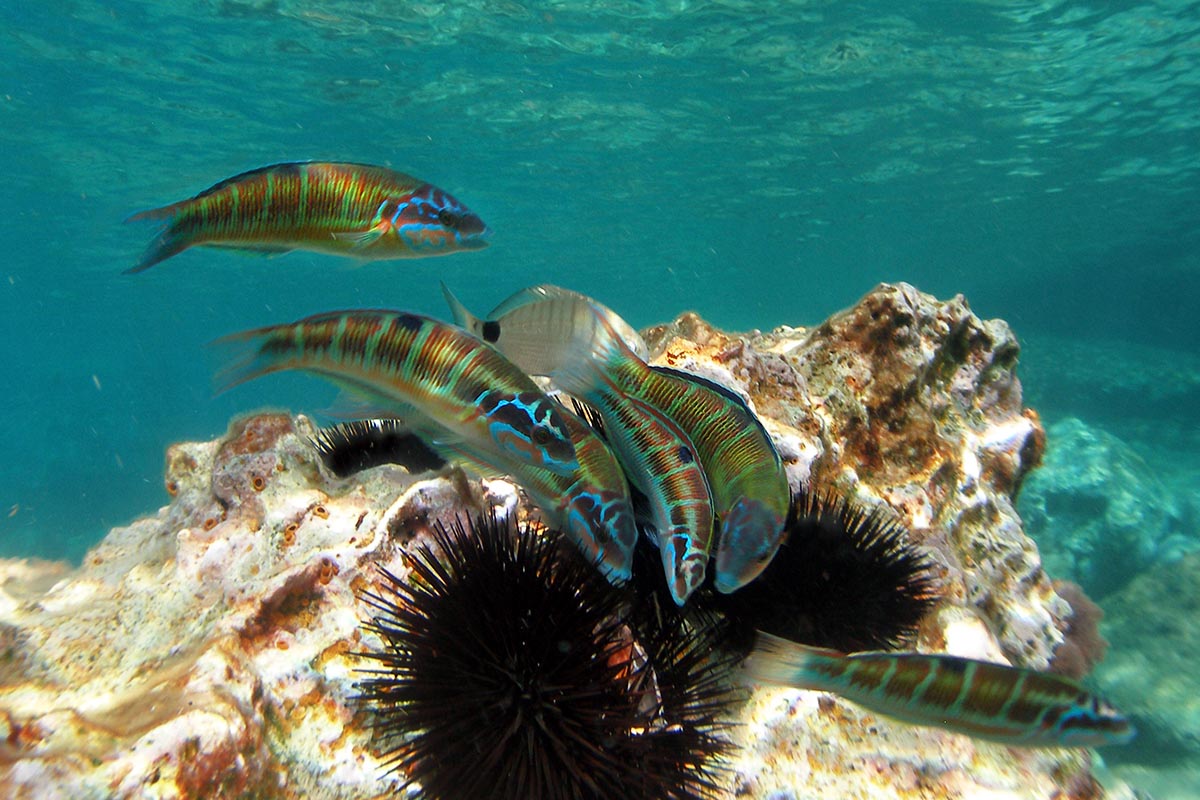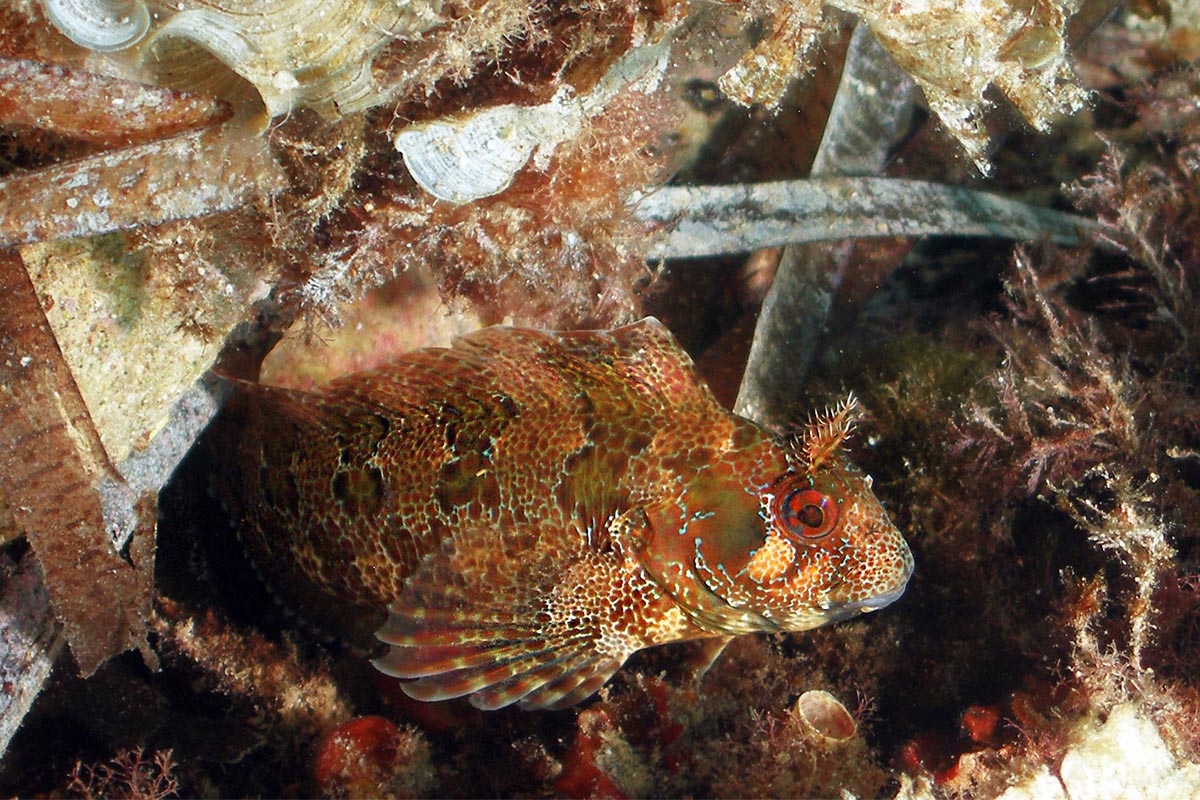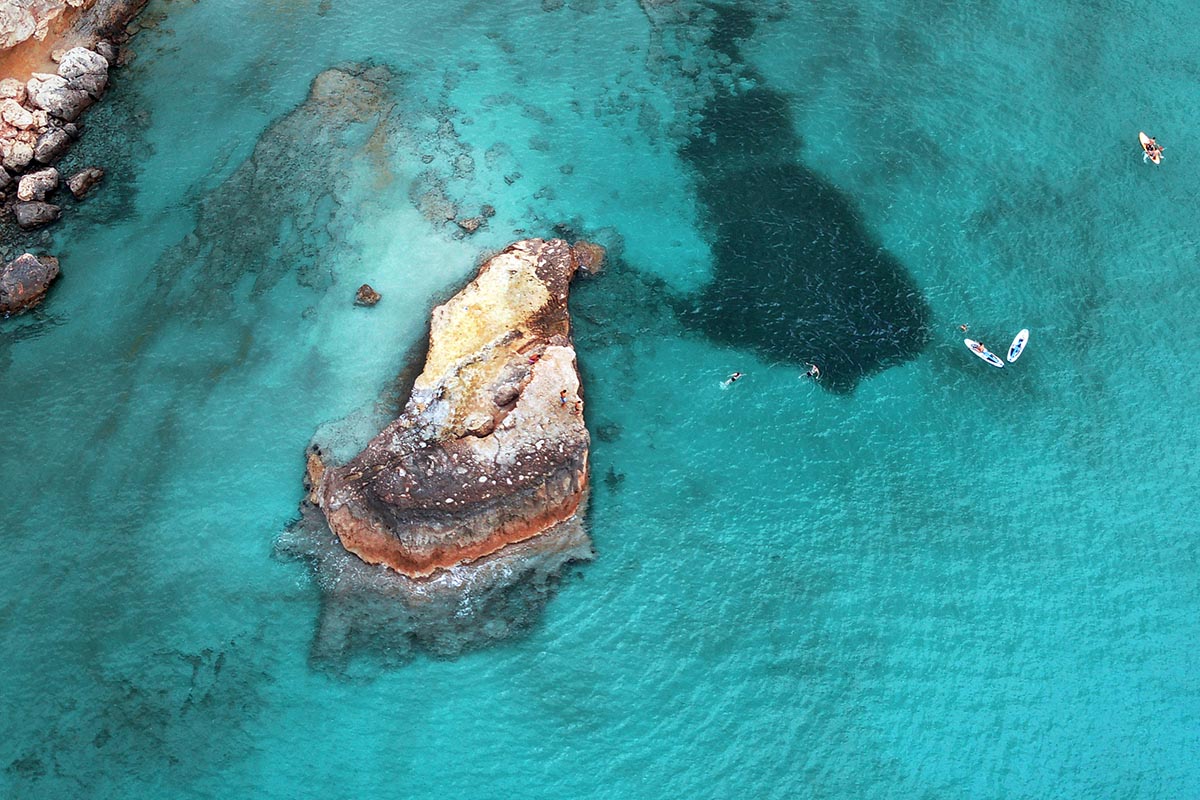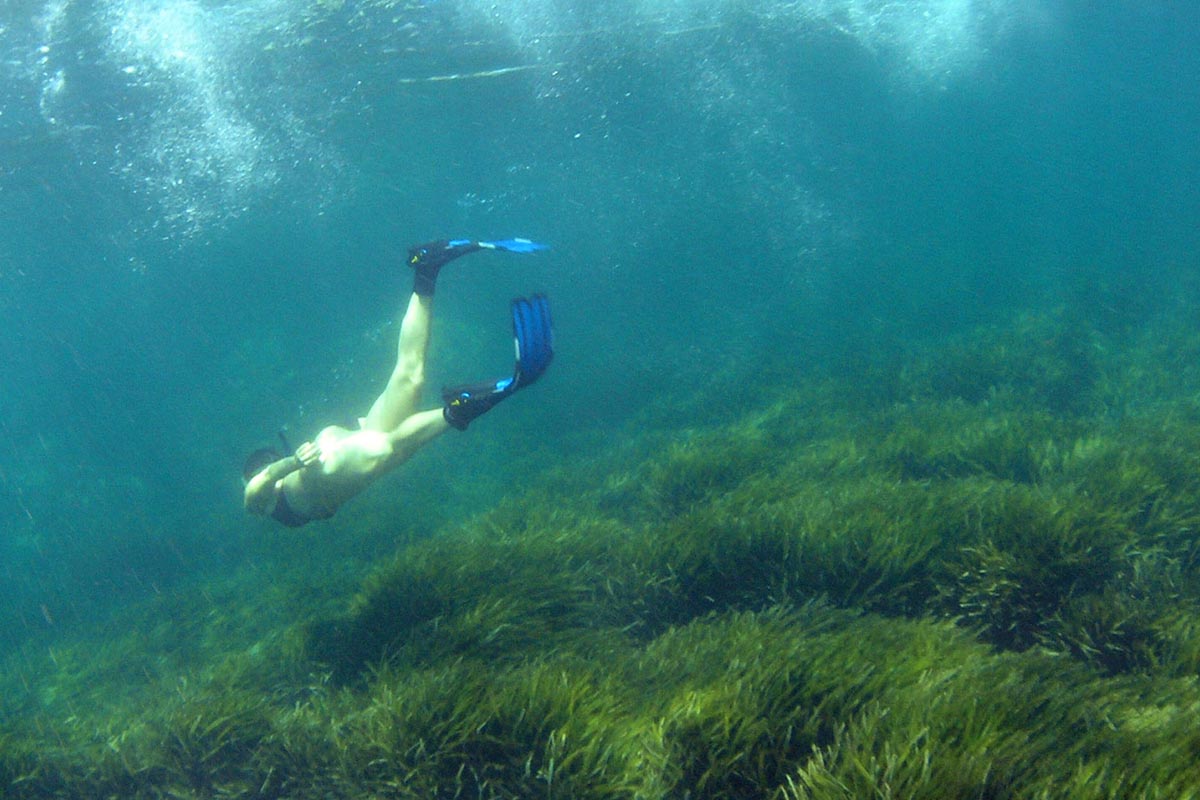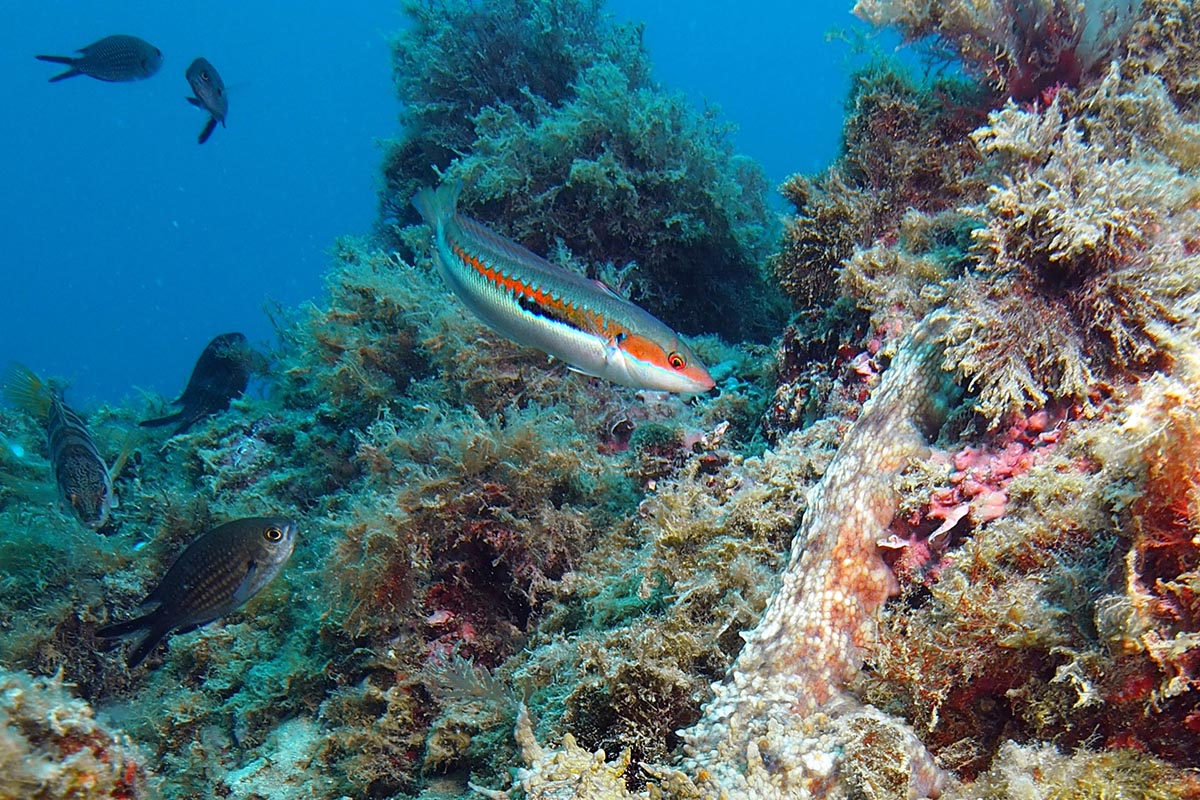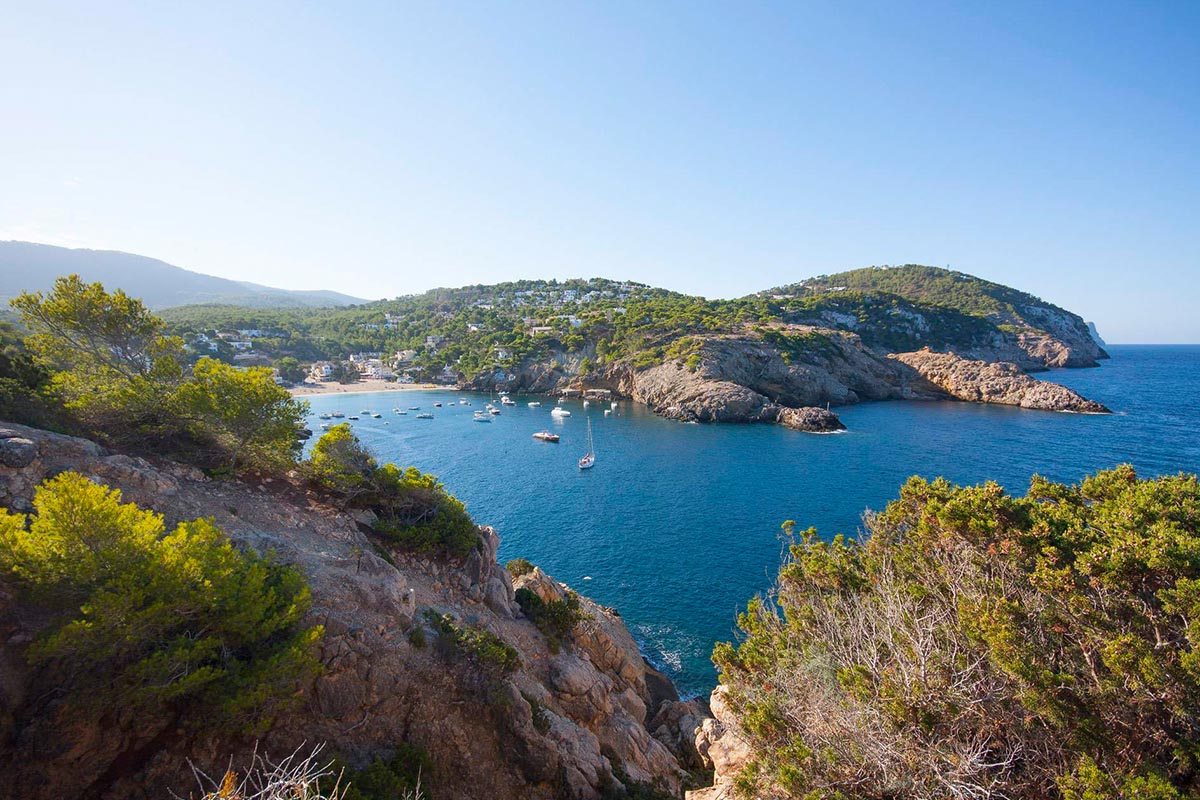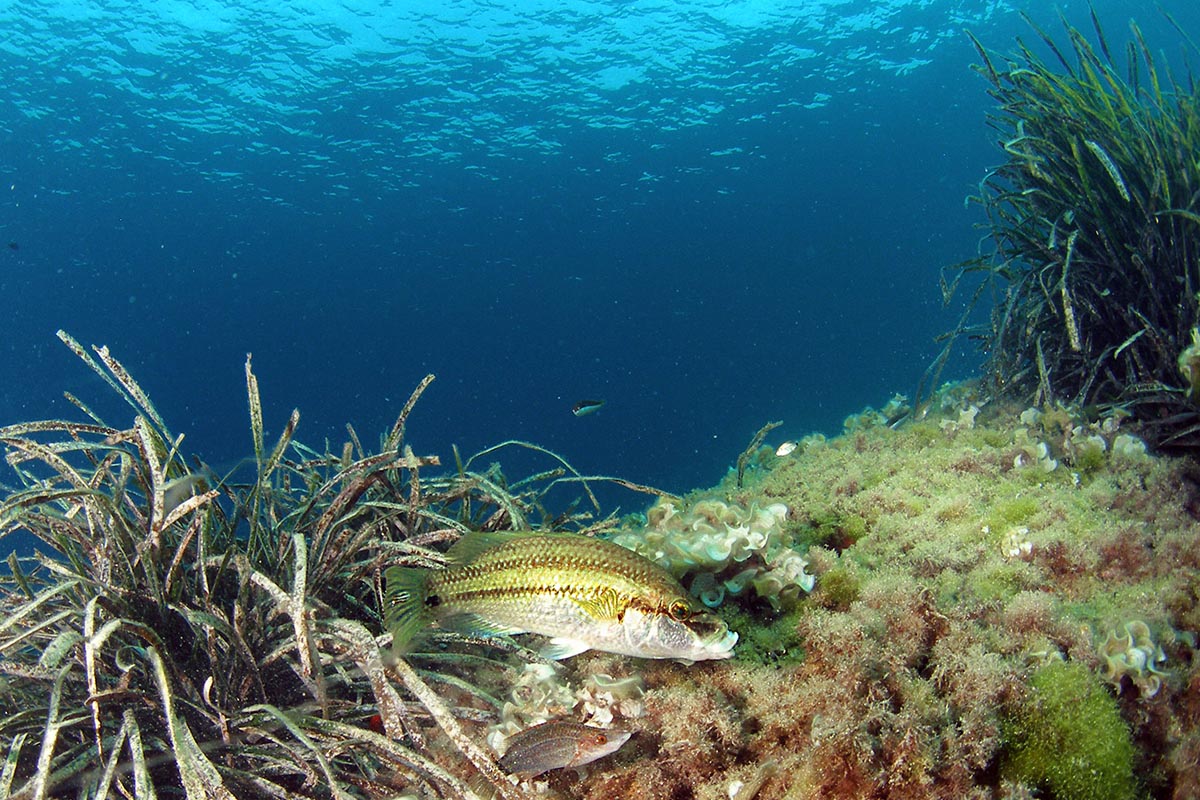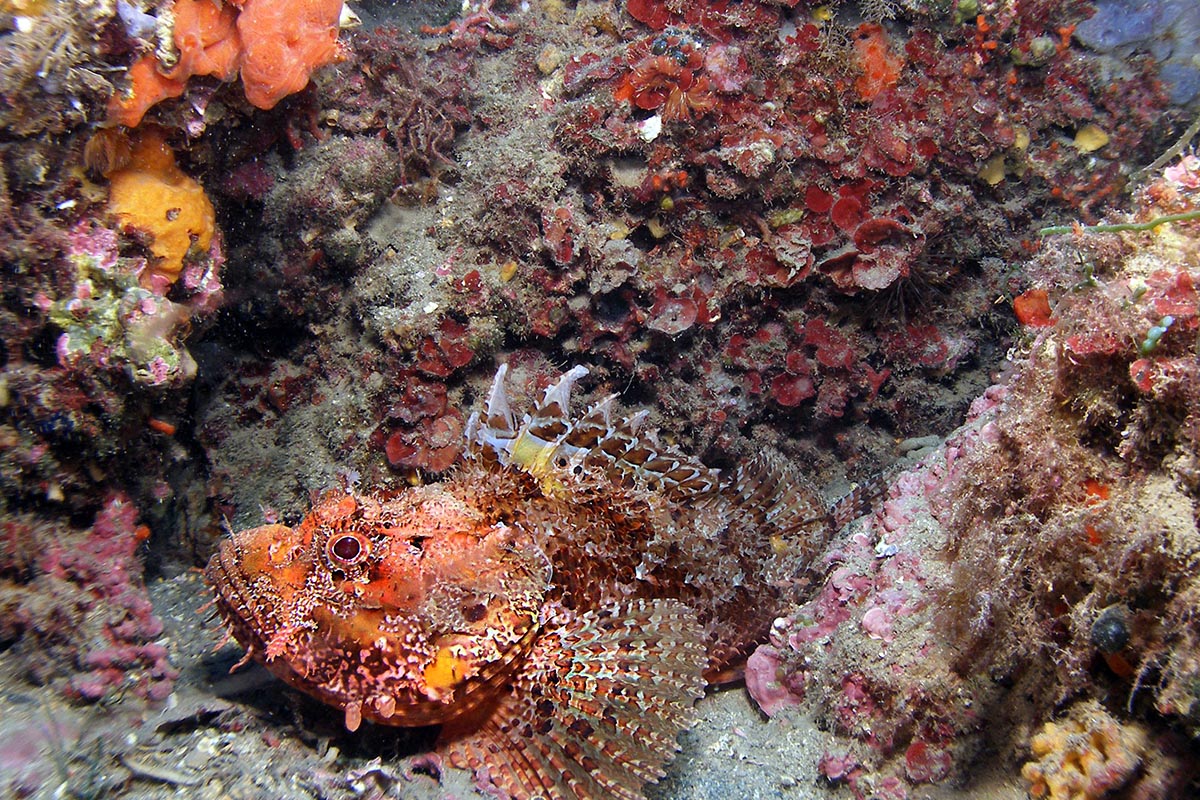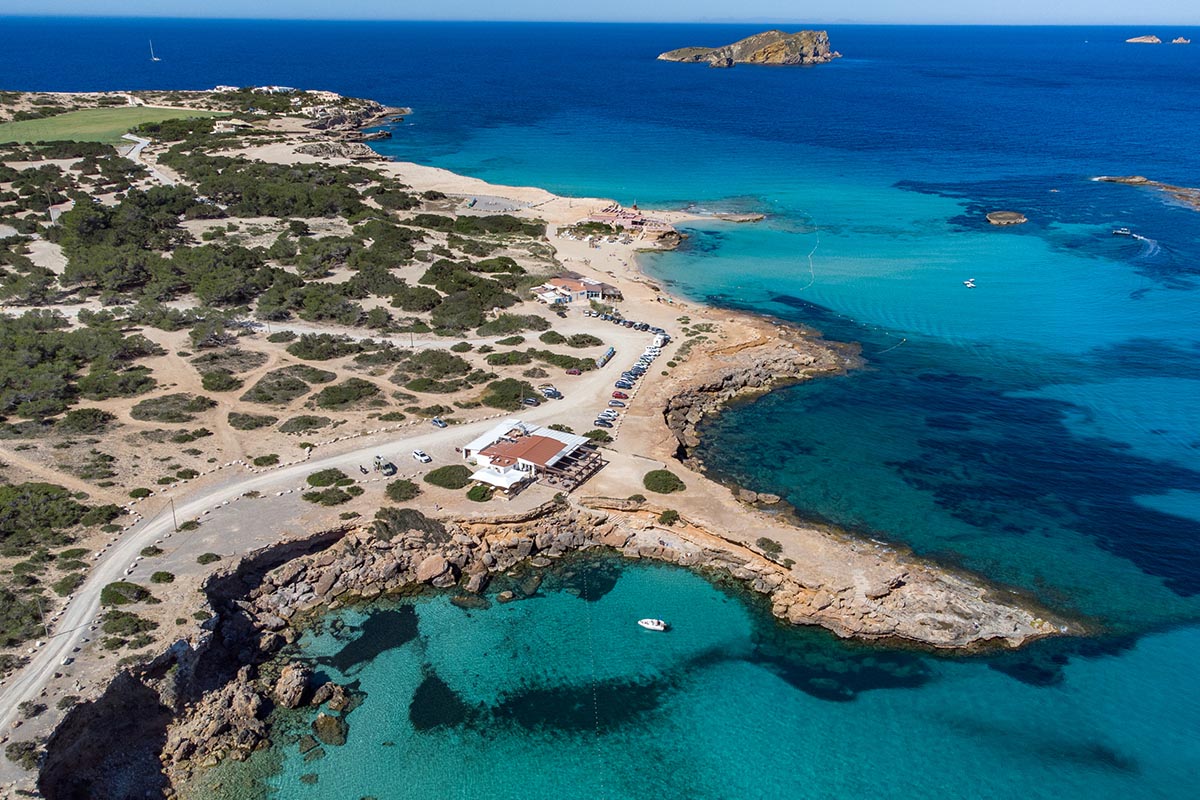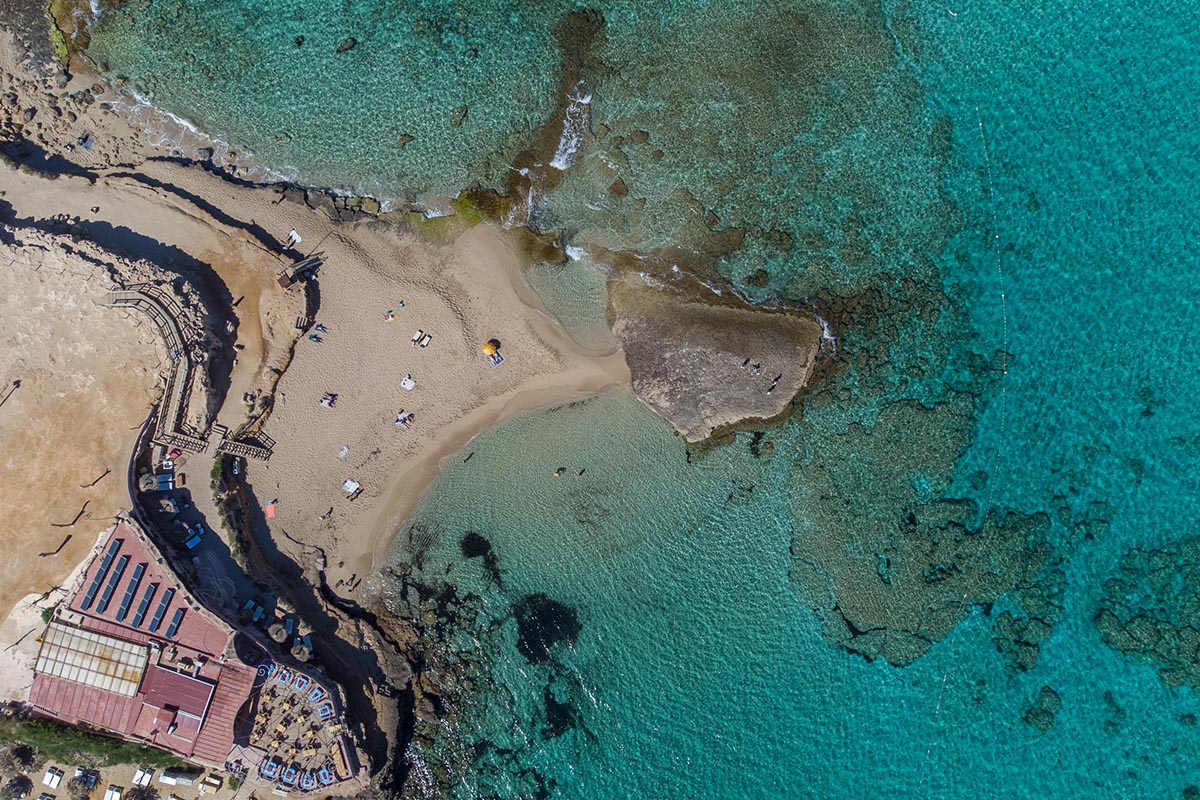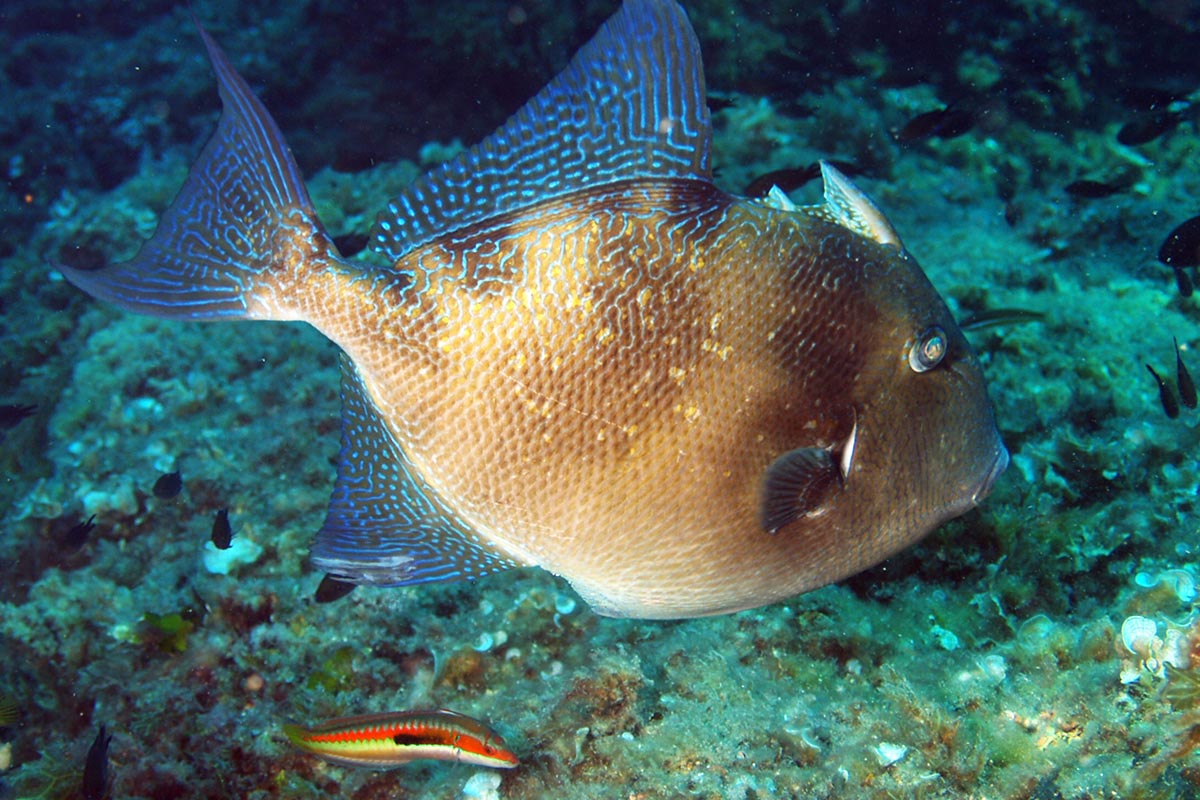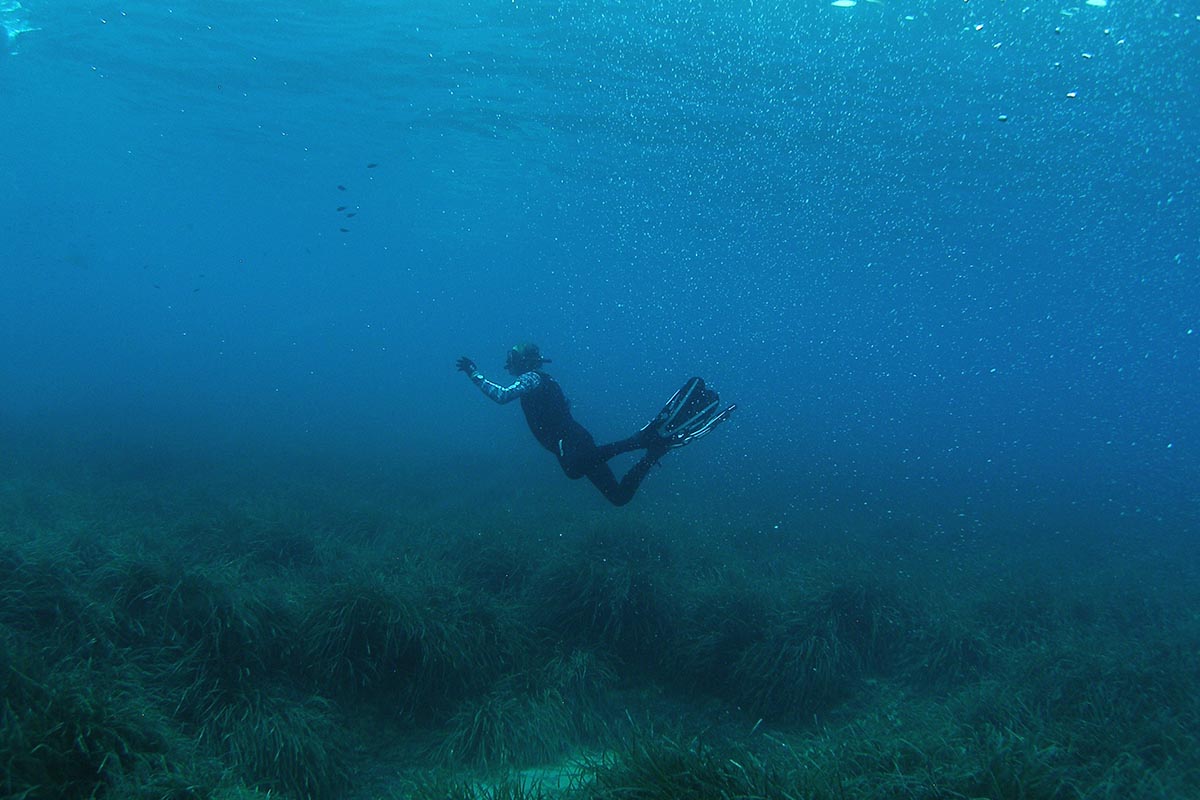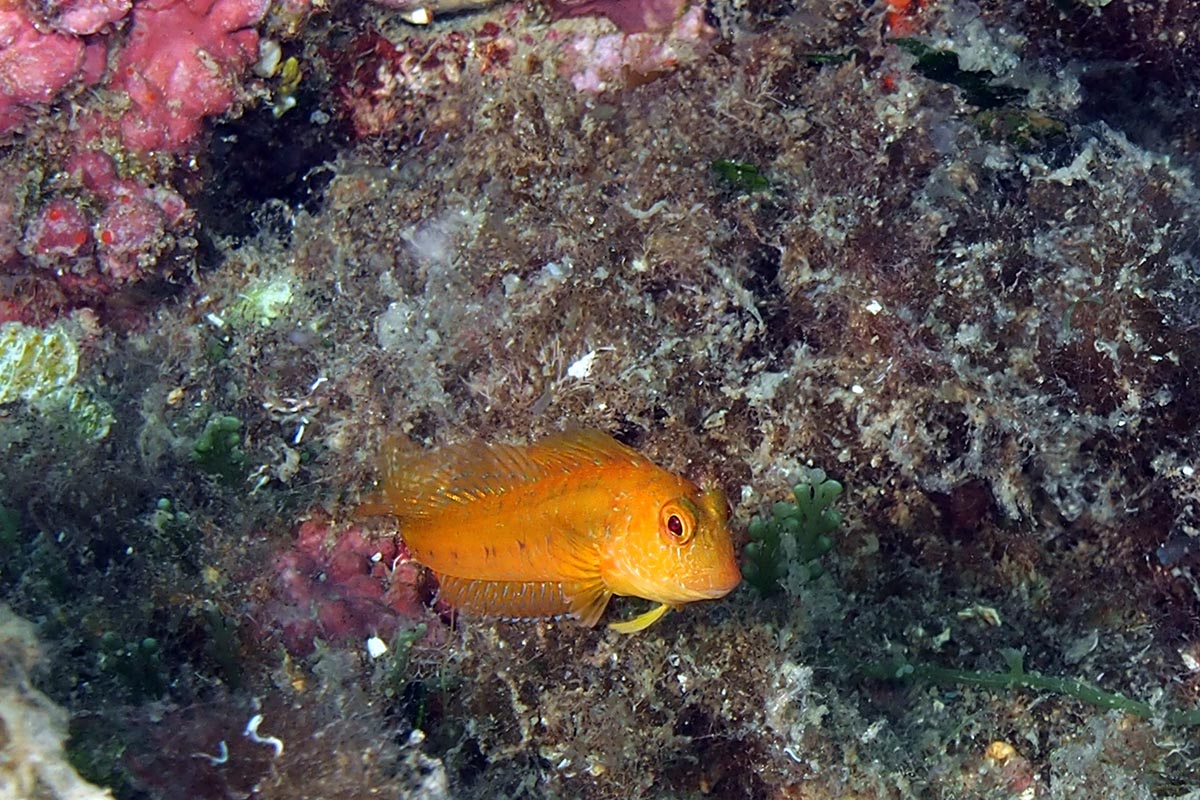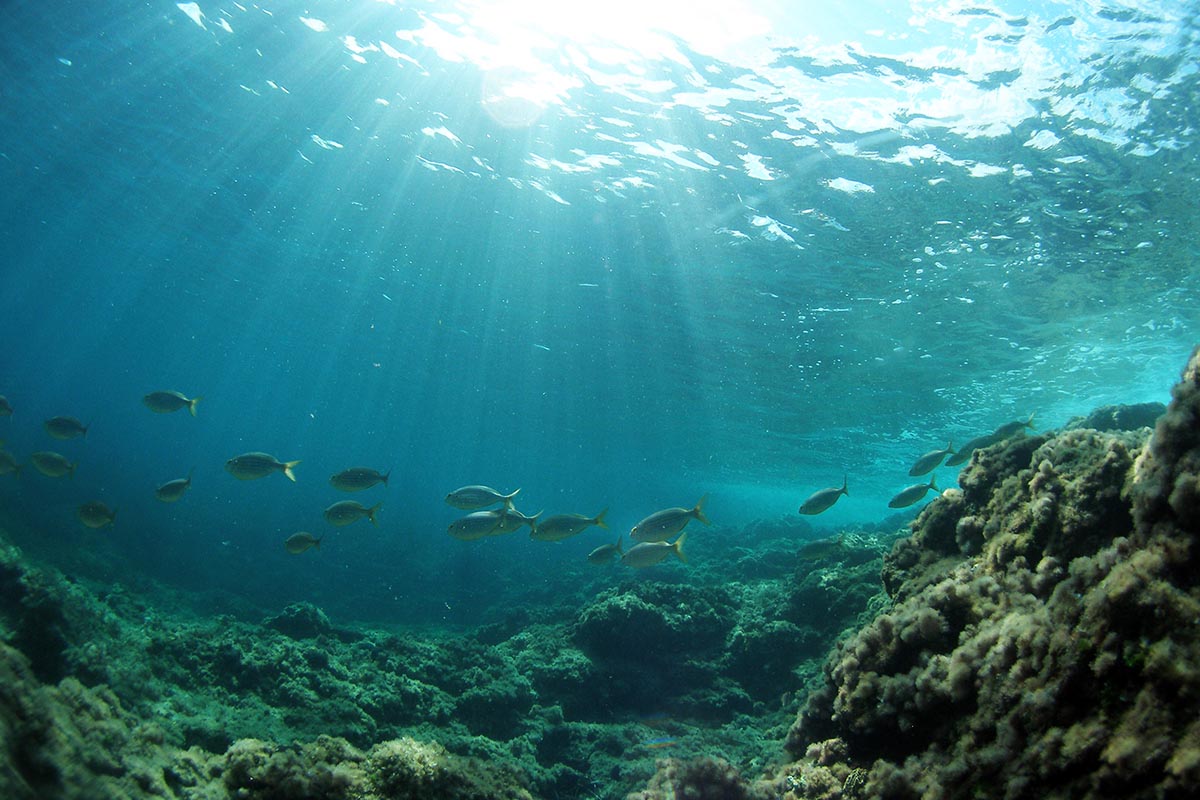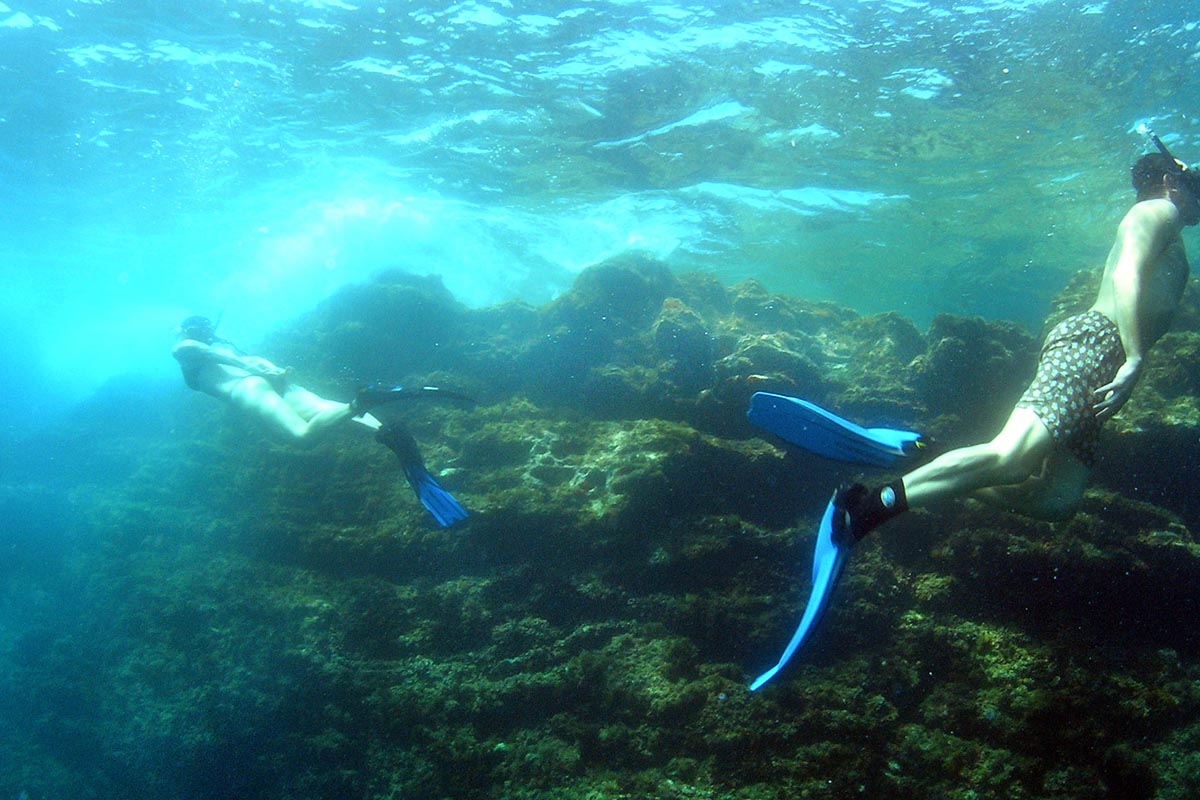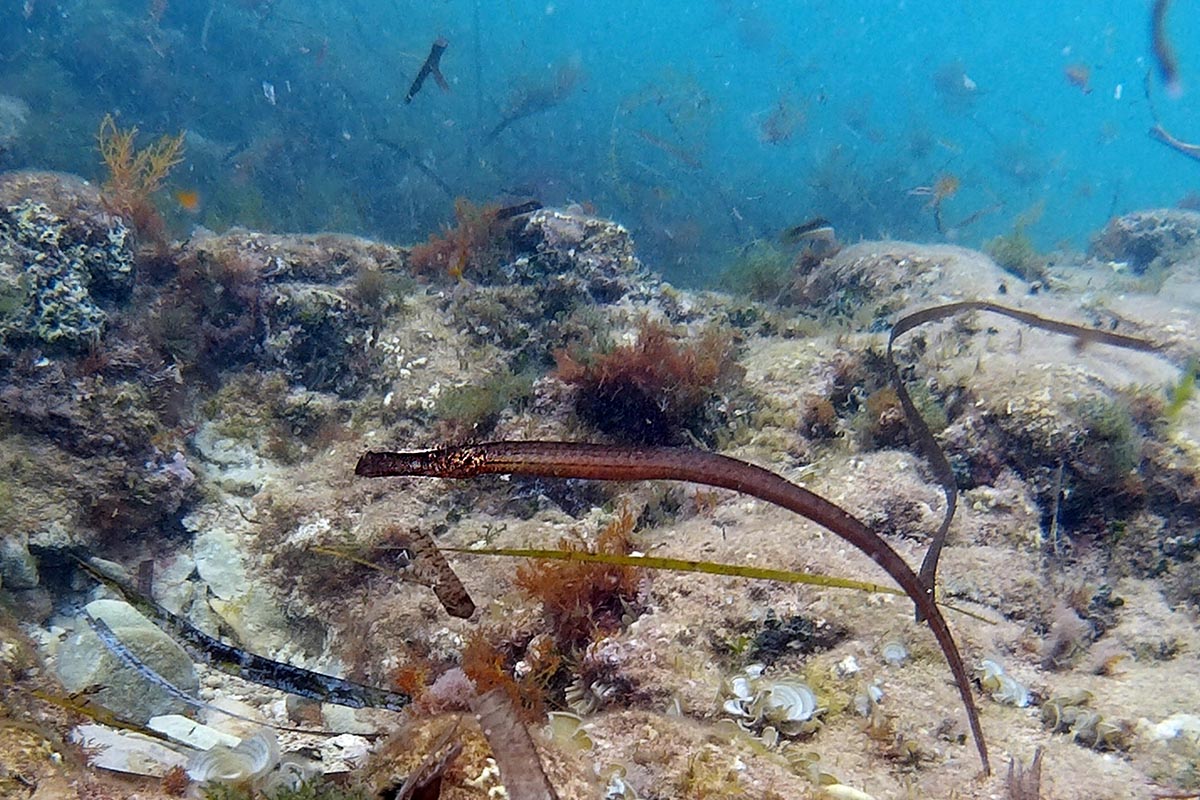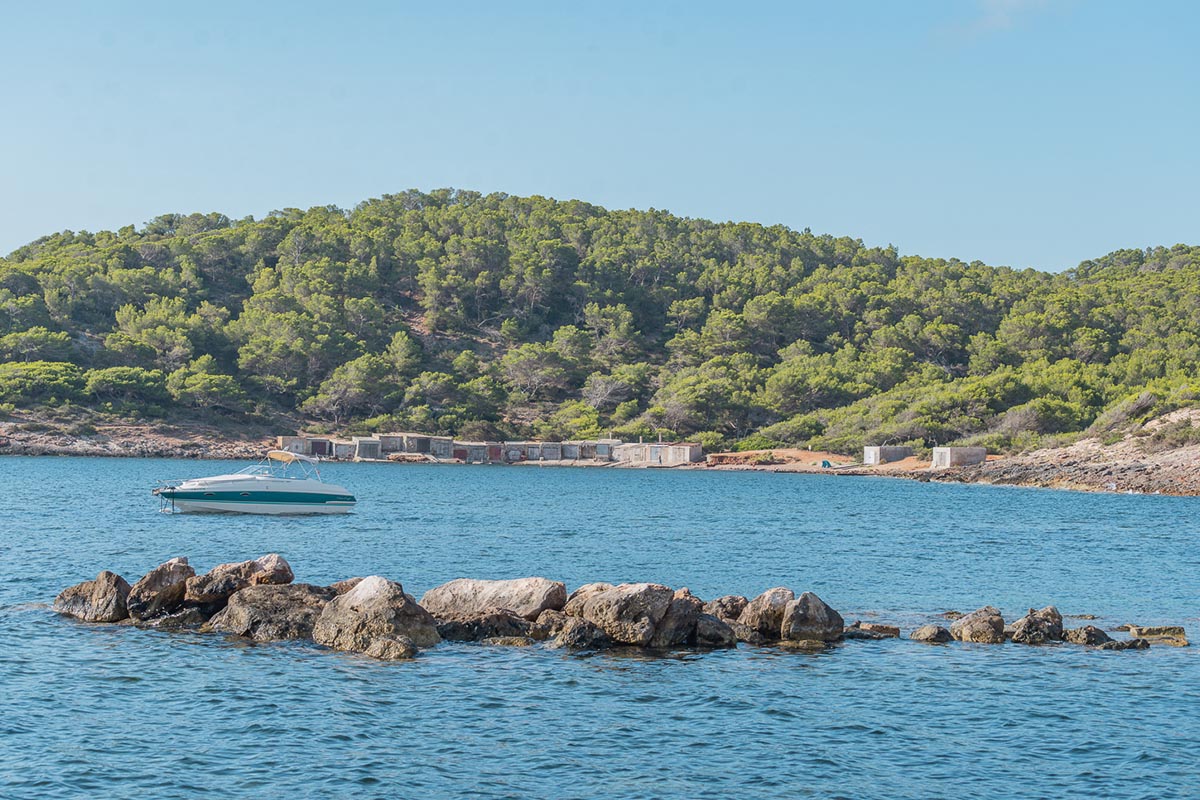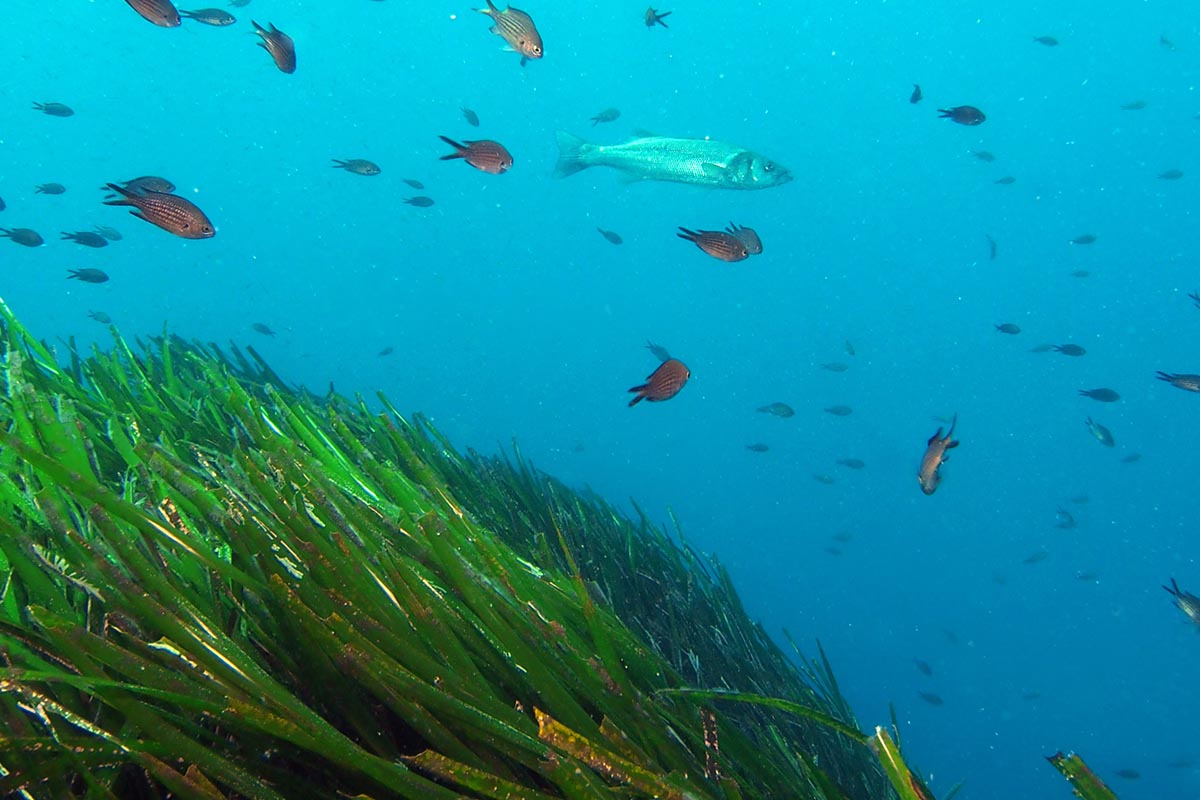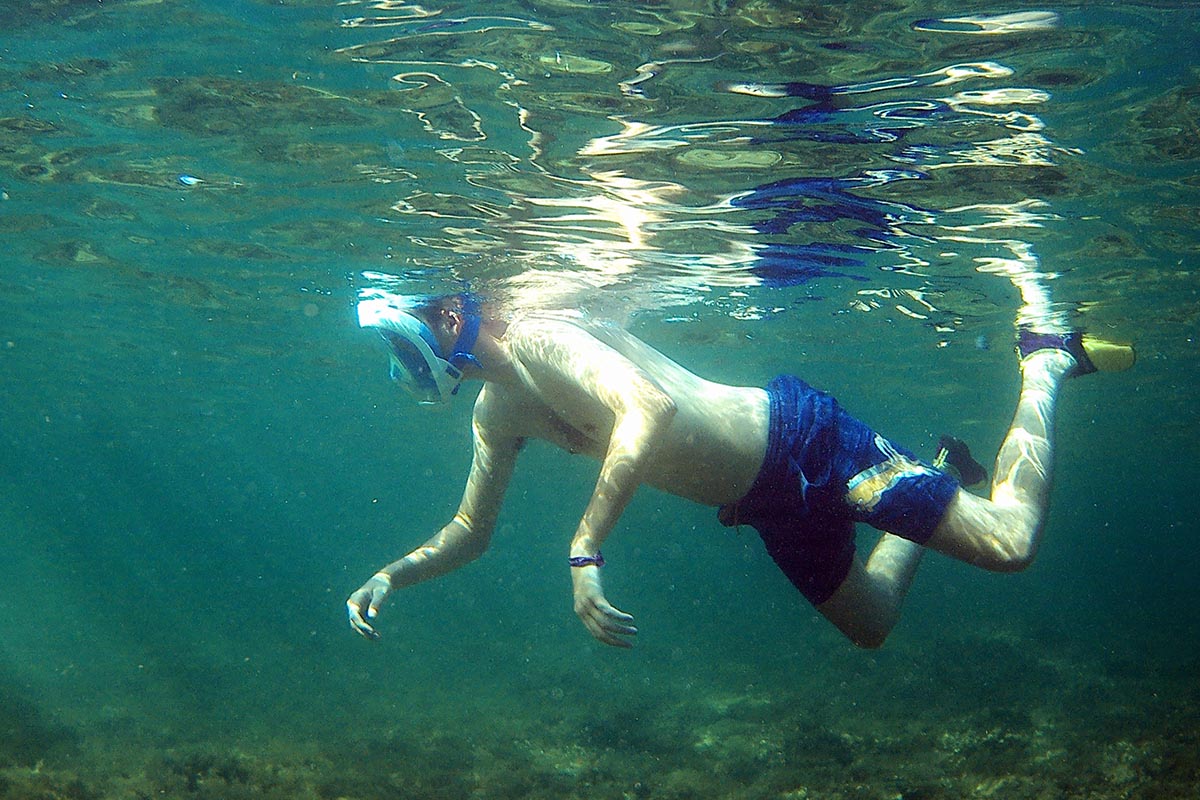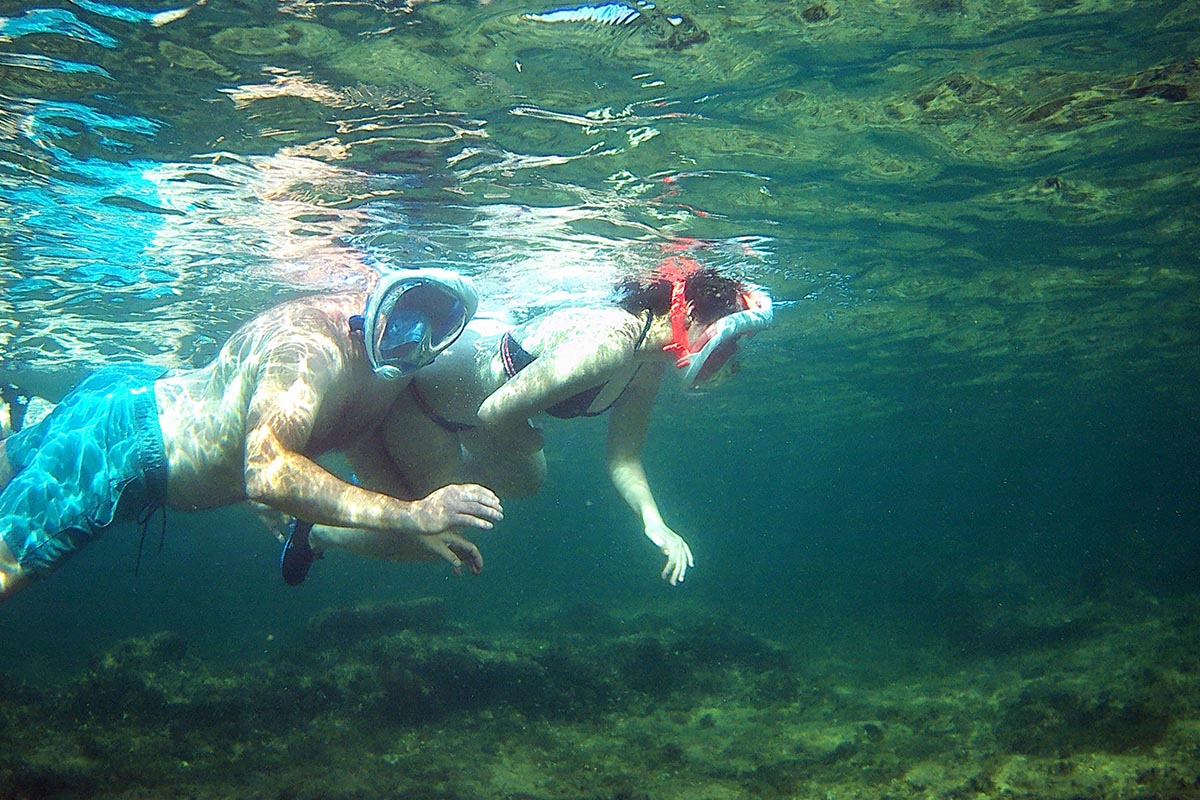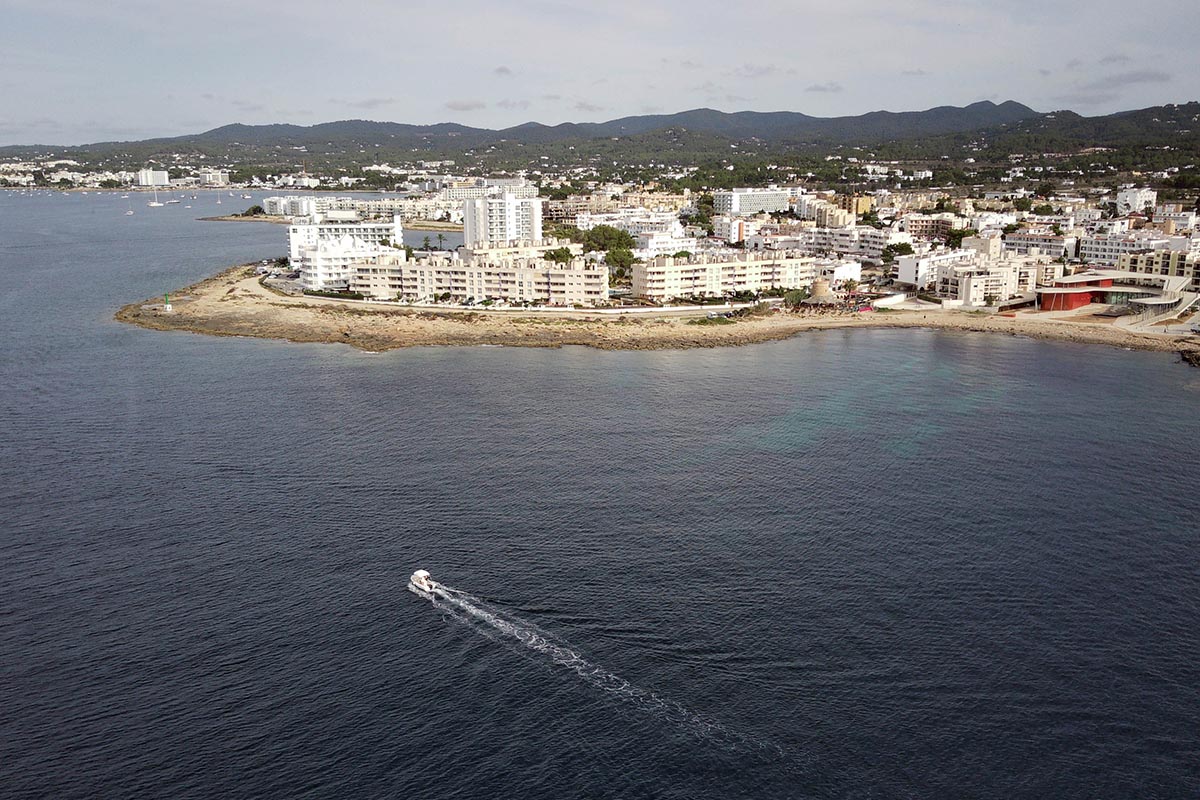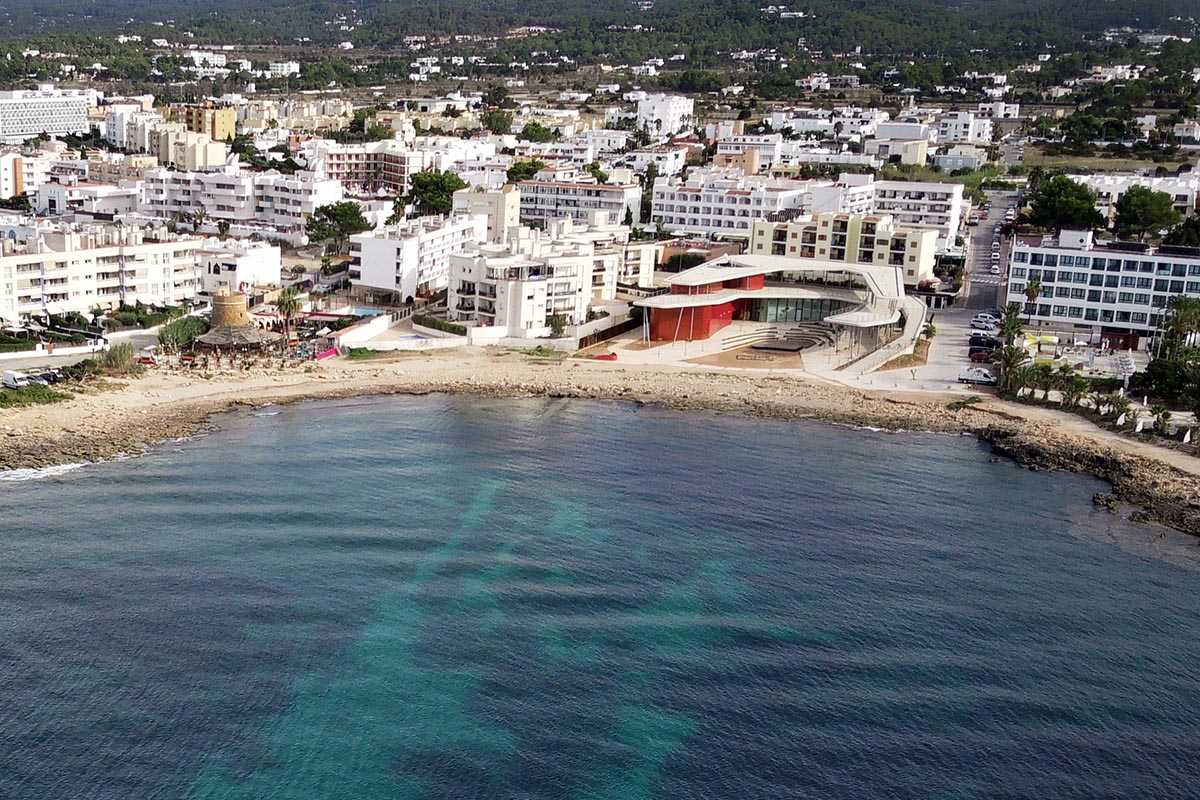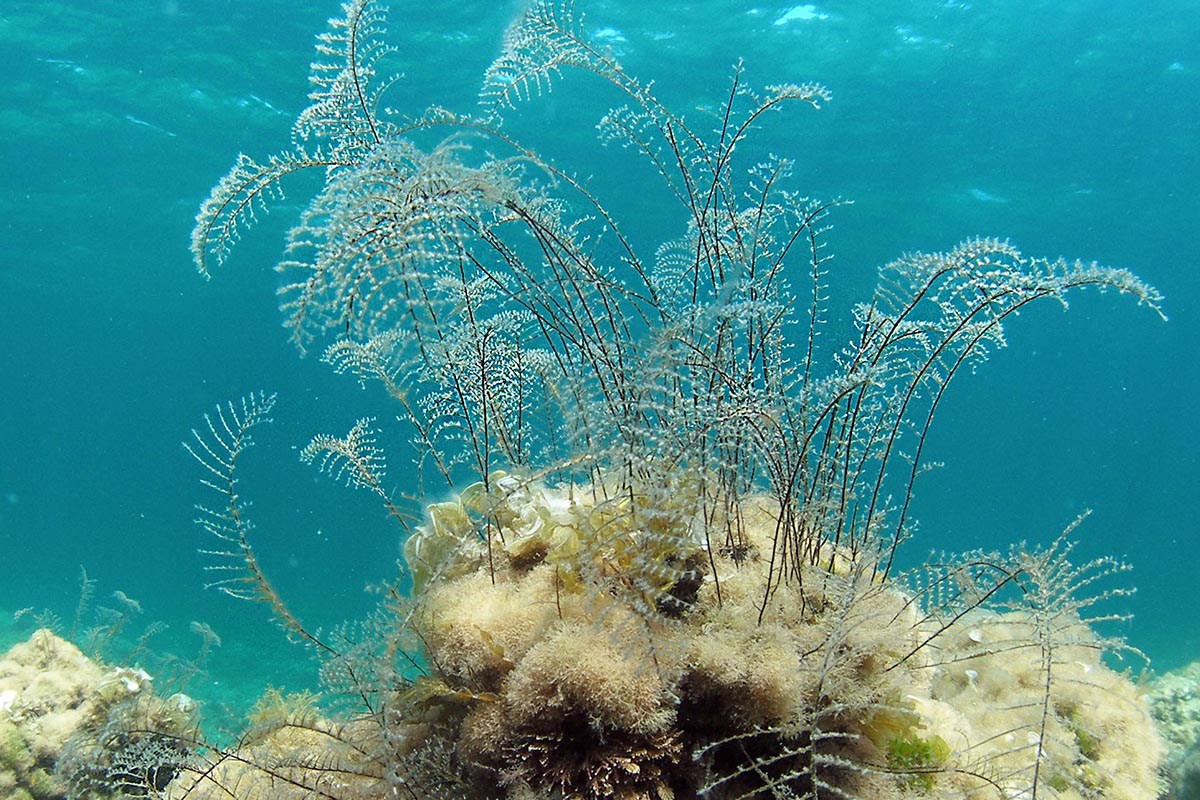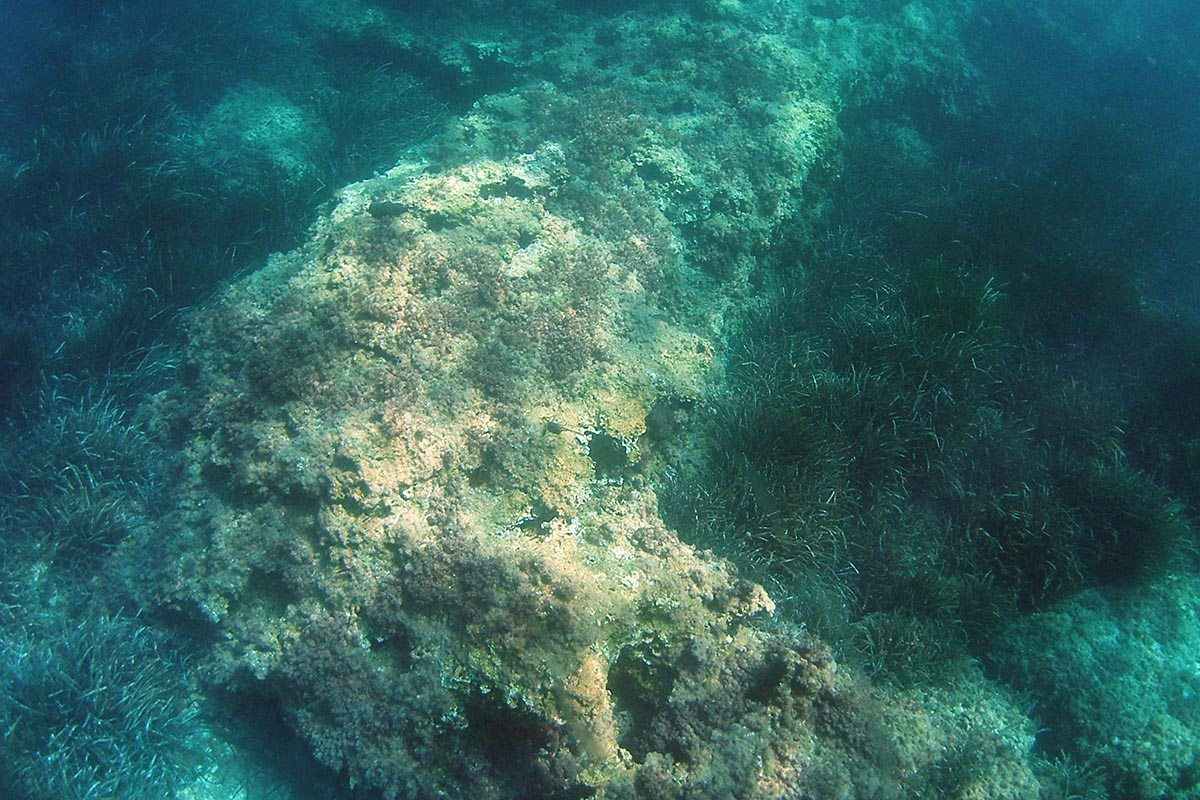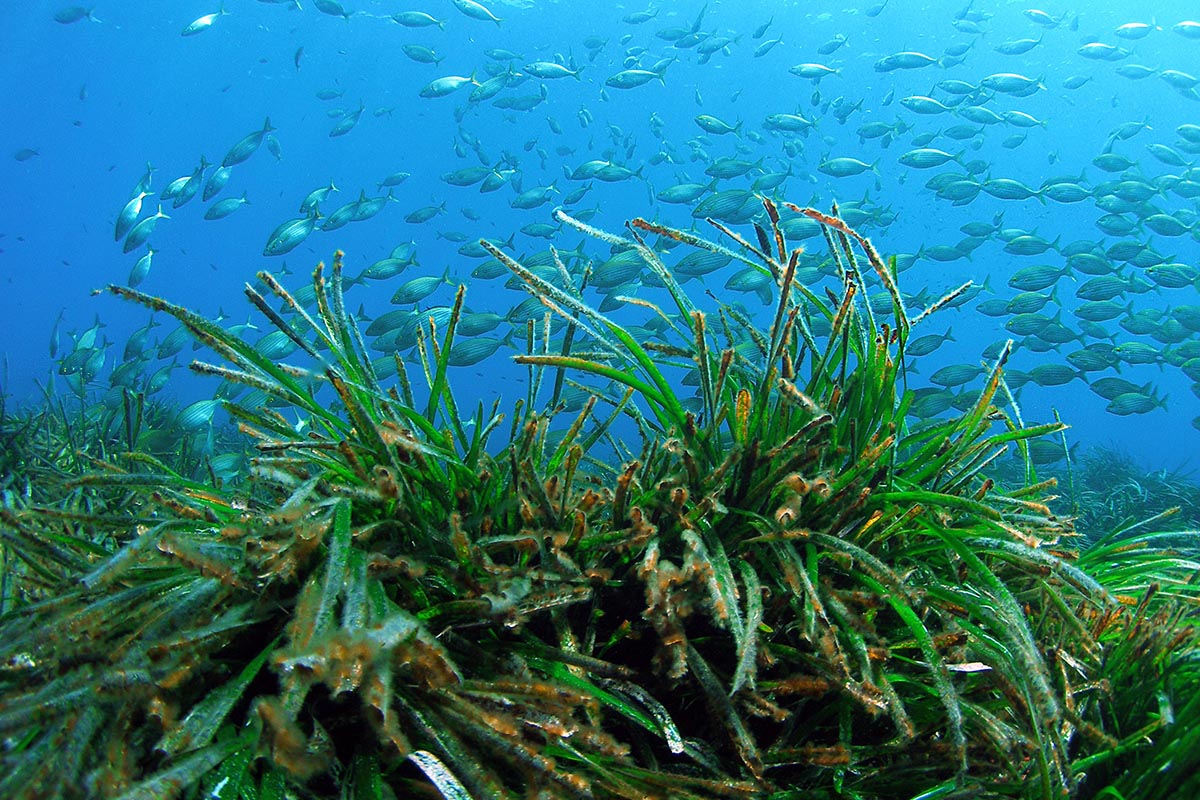Ses Salines Nature Park includes areas of particular ecological interest, as it is home to diverse plant and animal species. All this huge biological heritage has developed in an area which was reshaped many centuries ago from the primordial marshlands by the hand of man. The result is what we now know as the Ibizan salt pans. The salt pans have been exploited since Phoenician times with several places bearing witness to the historical relevance in terms of the extraction, transport and marketing of salt. One such place is known as the muelle de llevant (the Eastern dock) in Punta des Cavallet. It can be found at the northern end of the beach with the same name, a vast sandy area that extends to the watch tower of Ses Portes at its southern end and which marks the border with another huge sandy beach in the west, Ses Salines.
The remains of the dock which are still visible can be seen alongside the three channels that supply sea water to the multi-coloured salt pans that open up to the west. From this point, the salt was loaded, destined for the city of Ibiza and it was one of three ports serving this industry, together with the port of la Xanga and the current salt docks at Sa Canal. From Punta des Cavallet there are amazing views of the walled city of Ibiza and looking towards Formentera you can see the various islets in the Es Freus channel that separates the two islands, which light up at dusk with the twinkling lights of the lighthouses and buoys.





